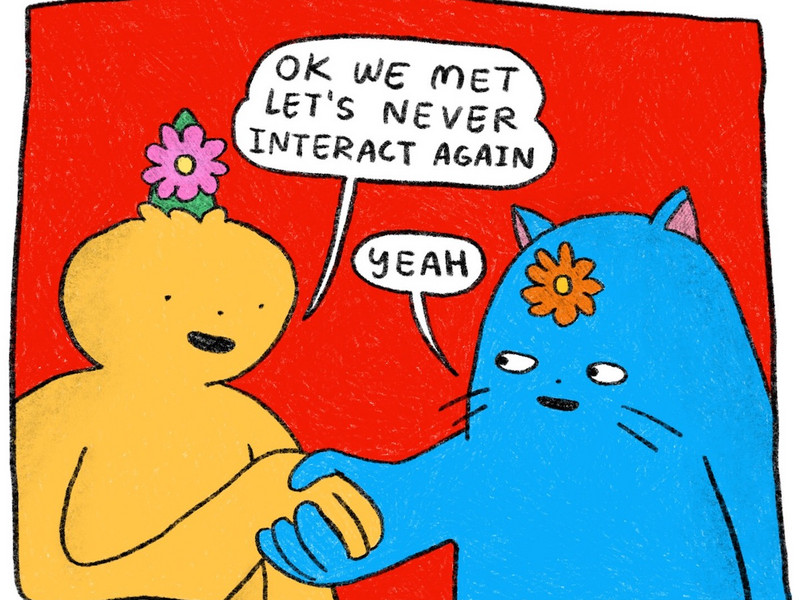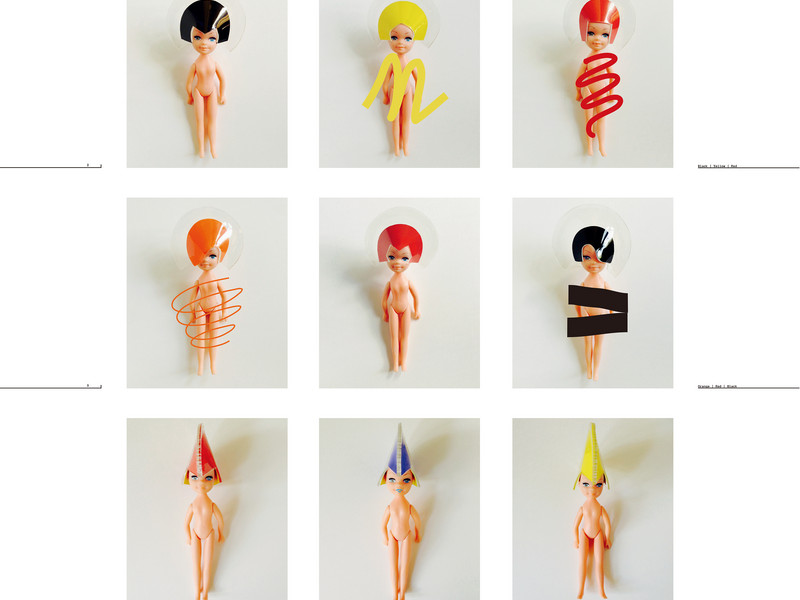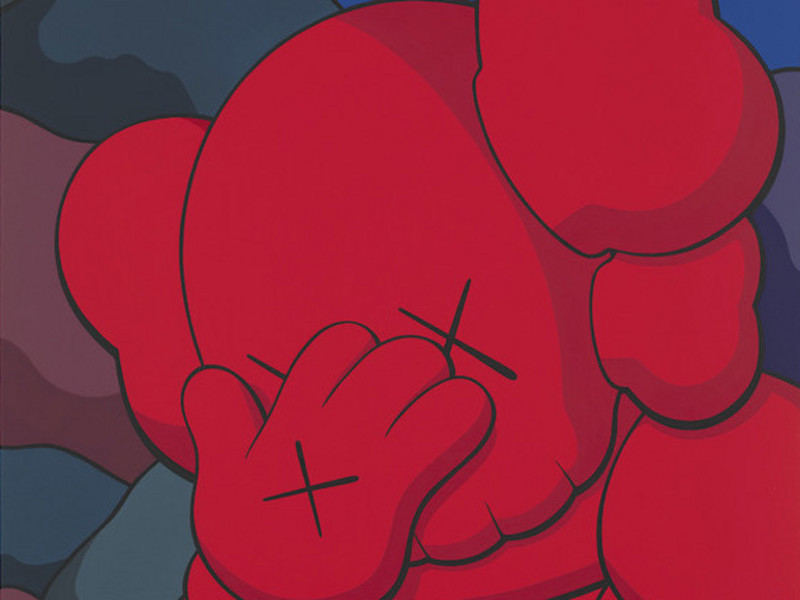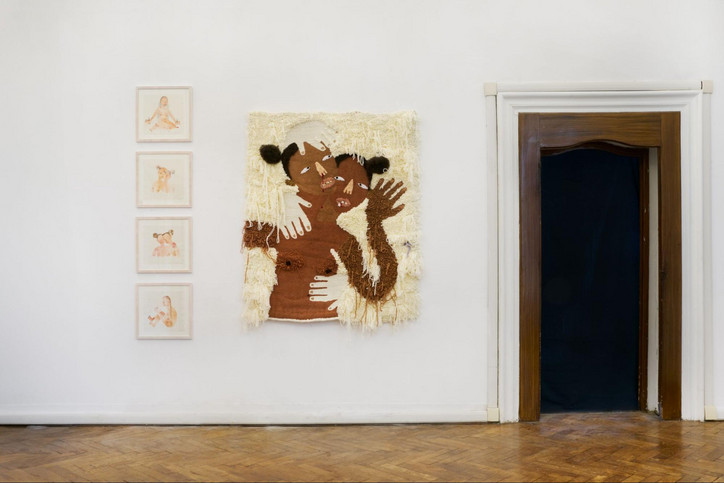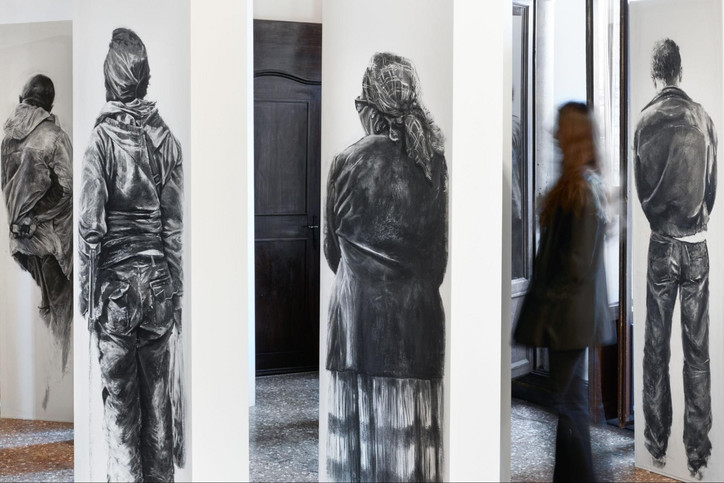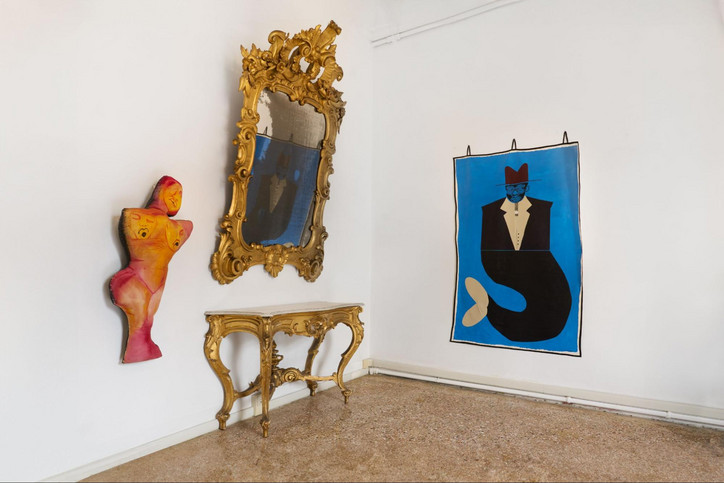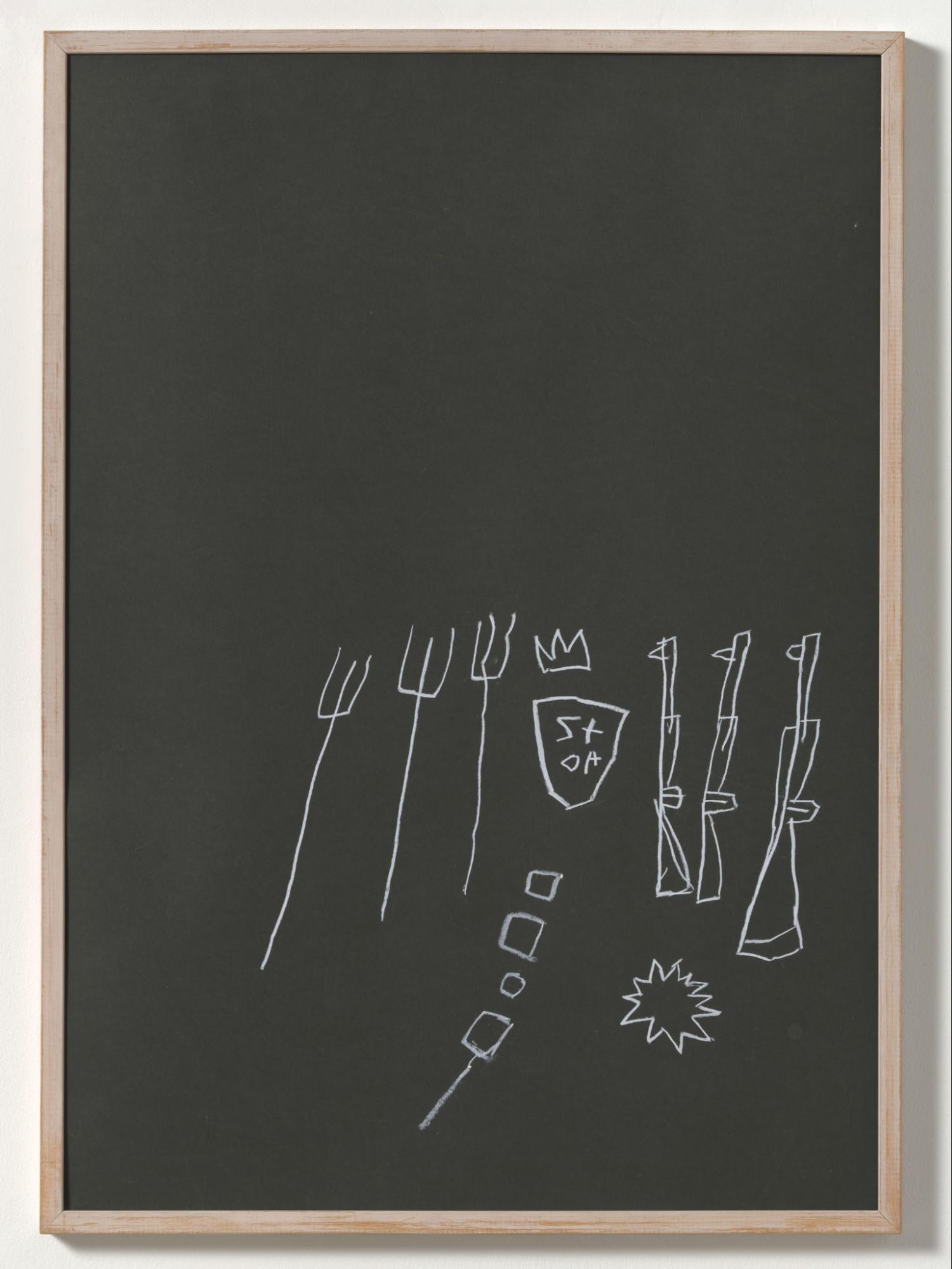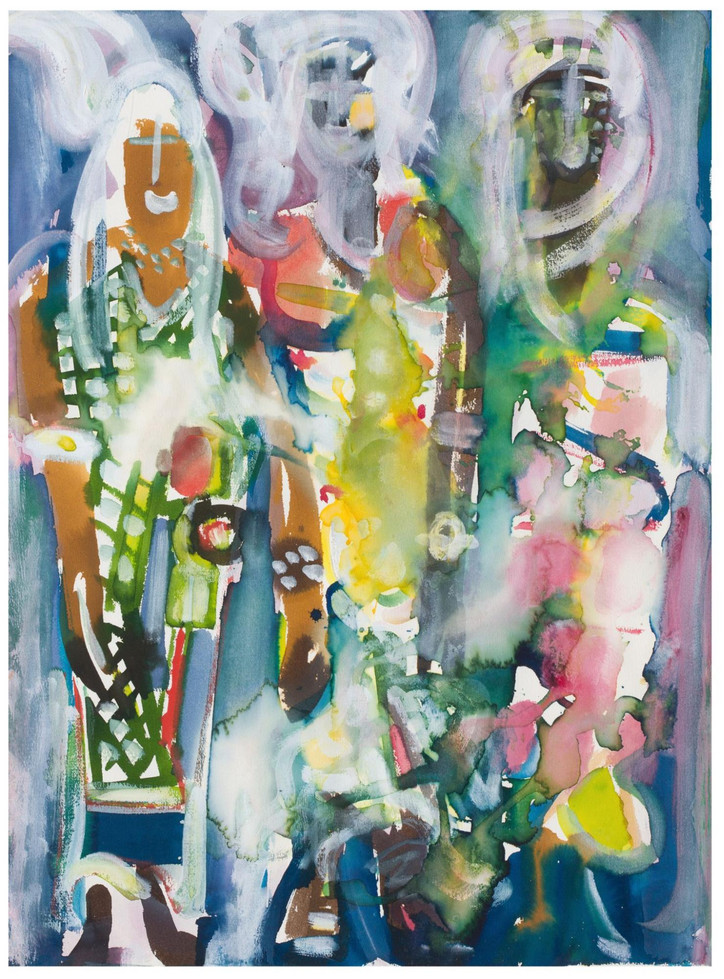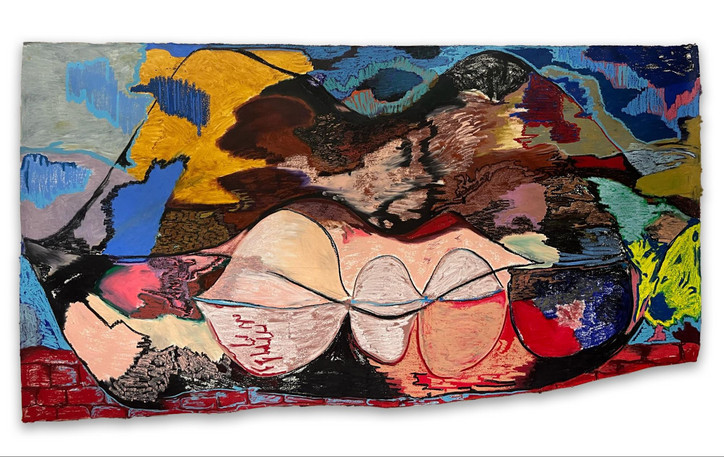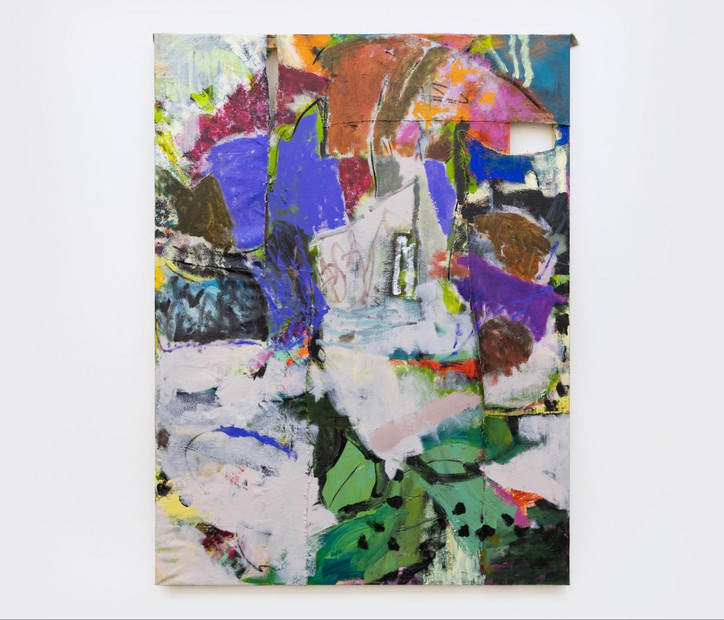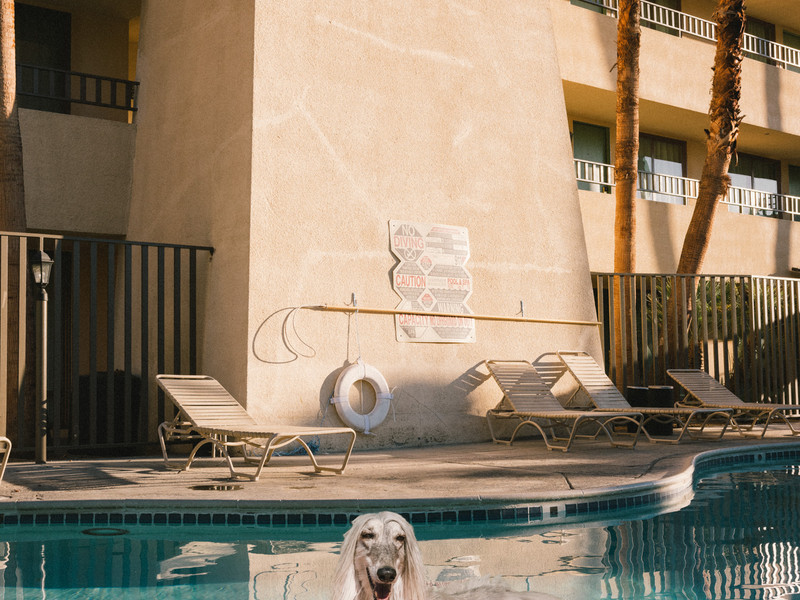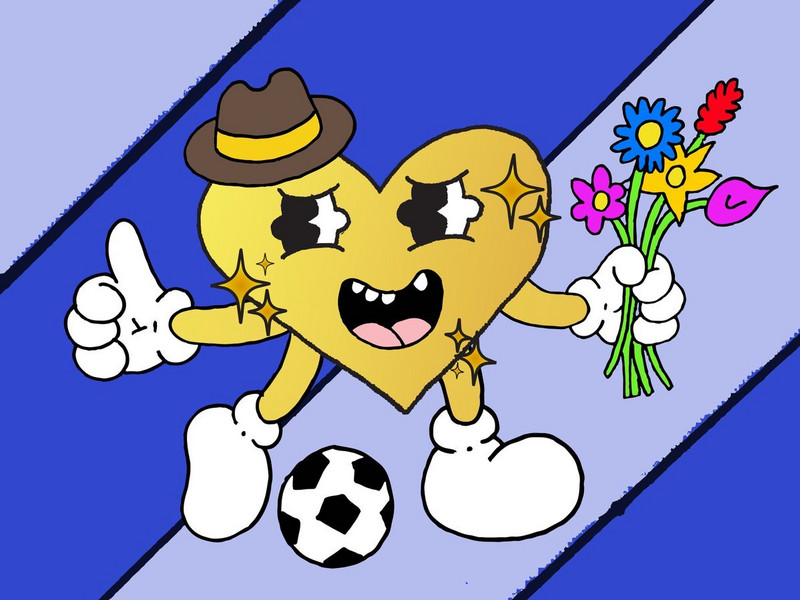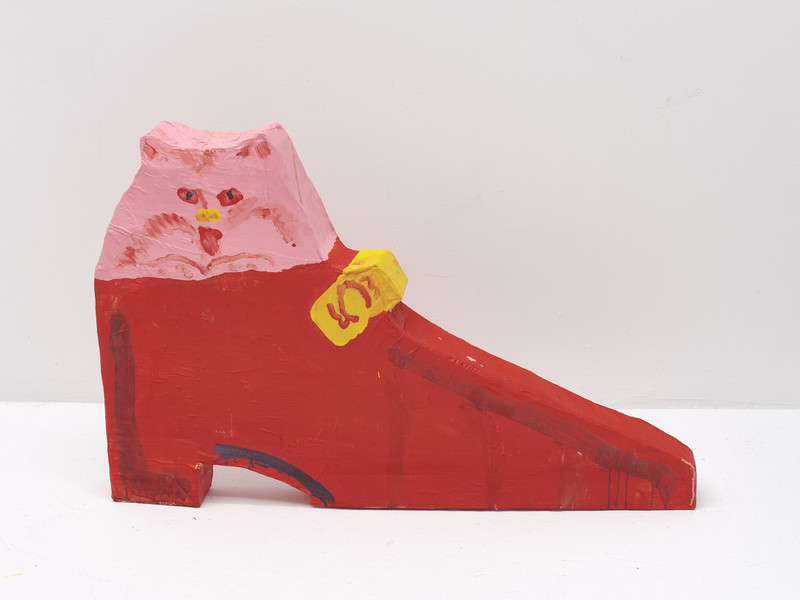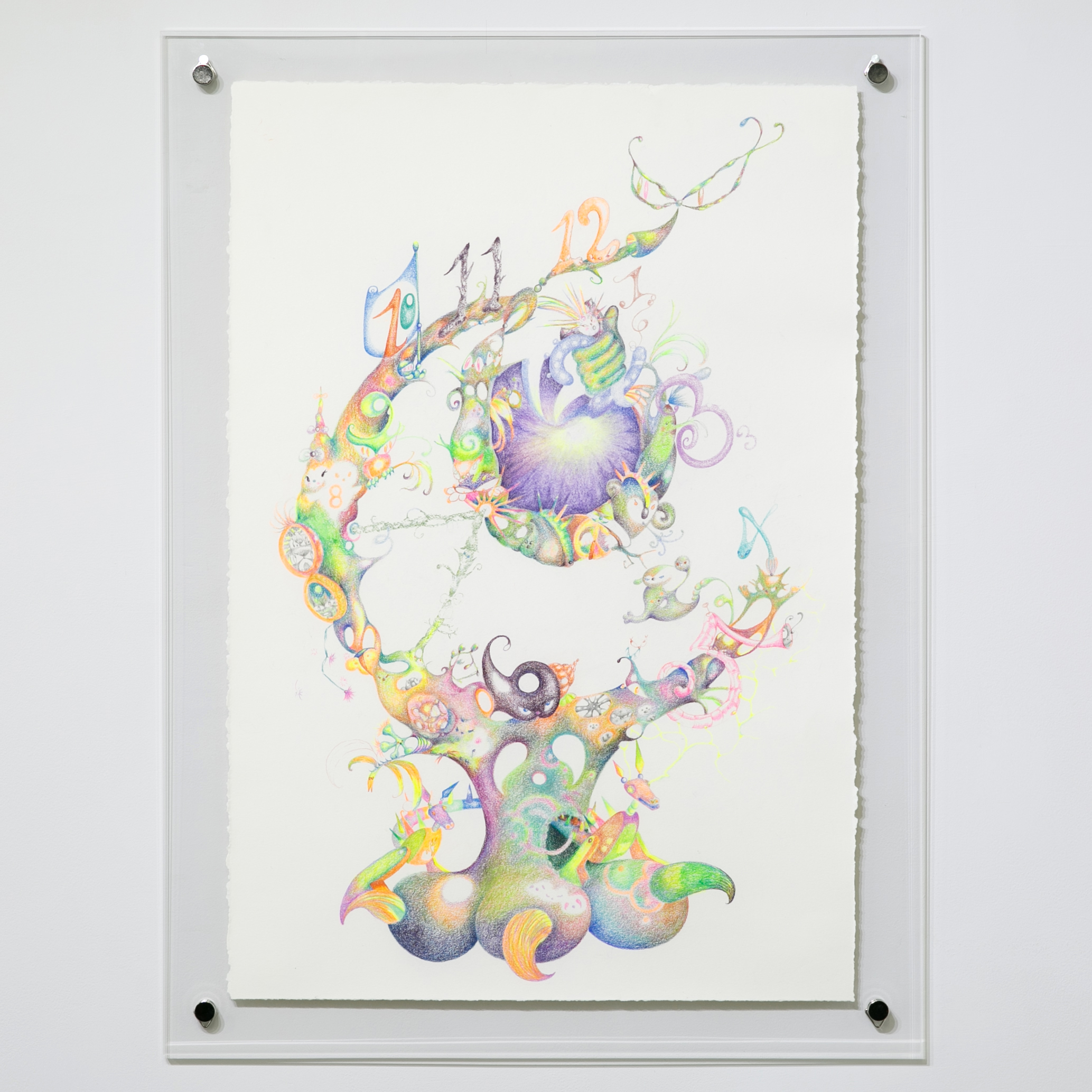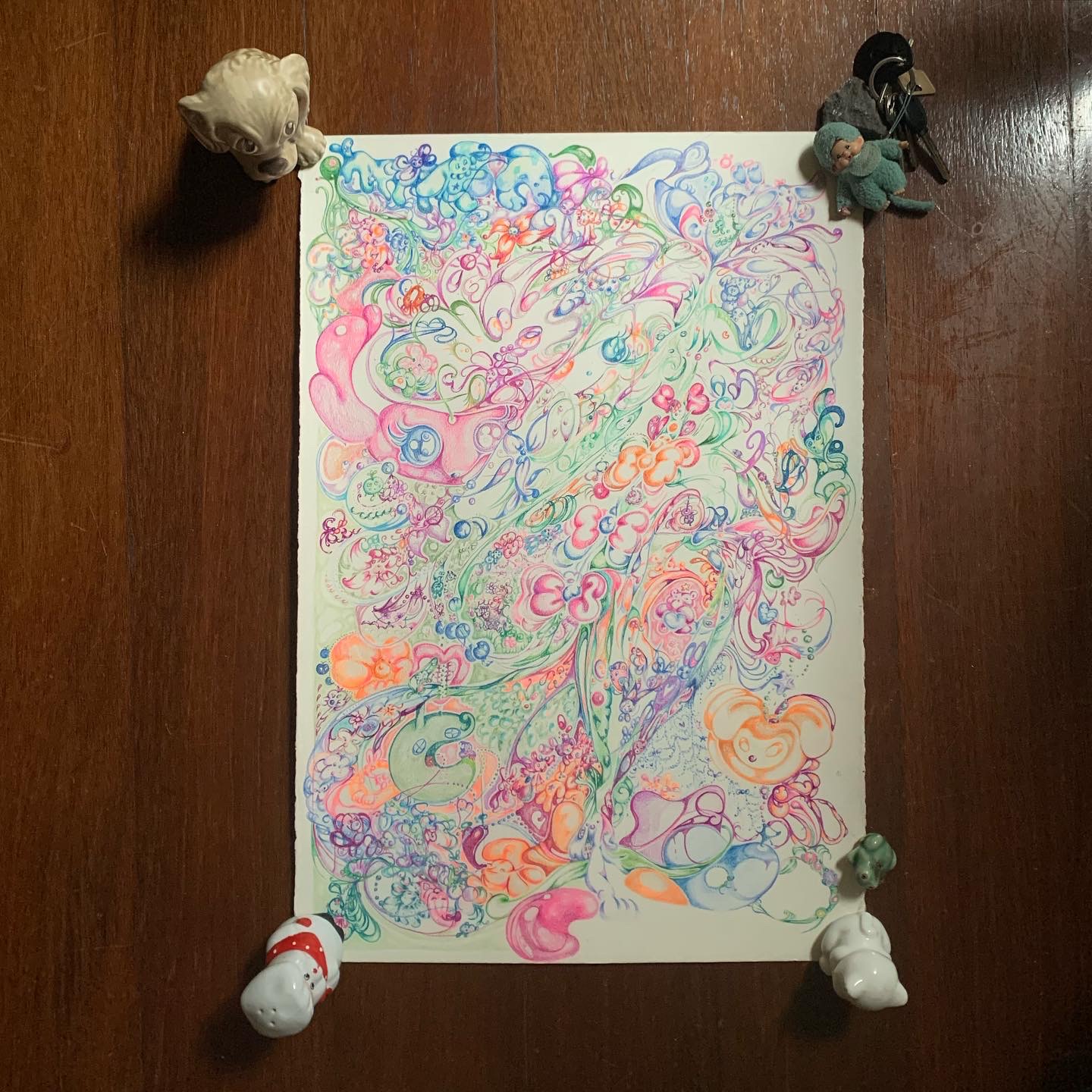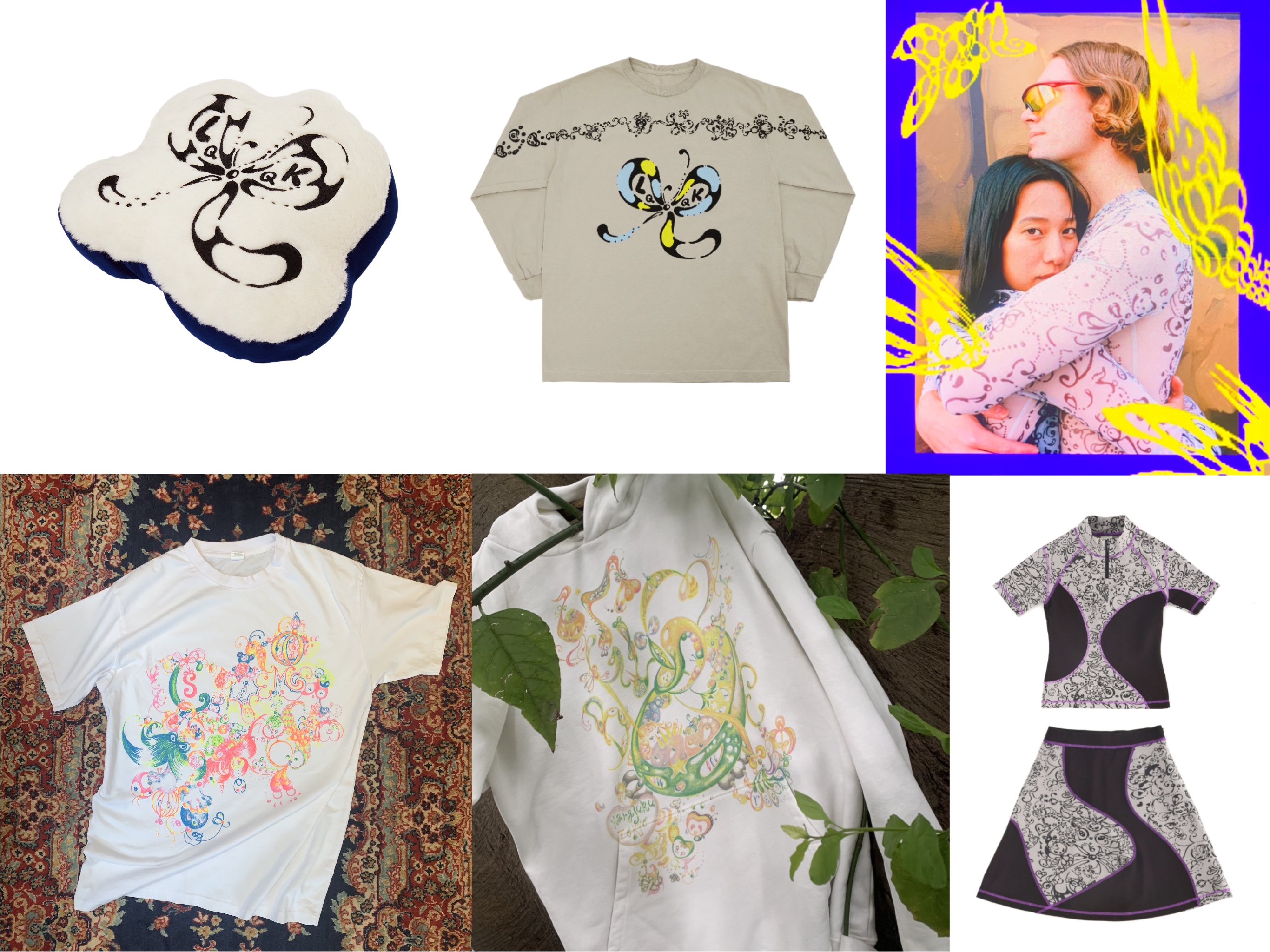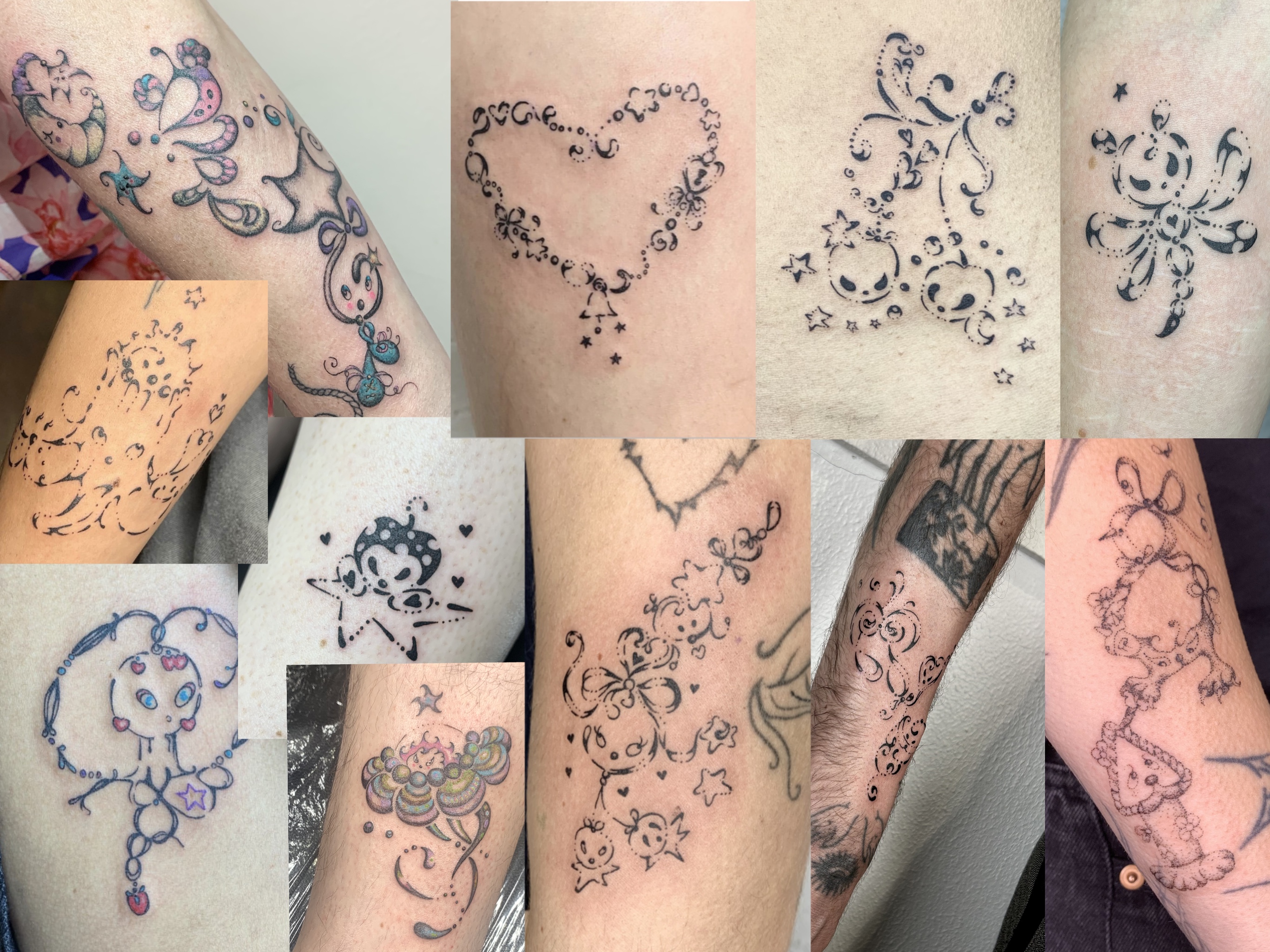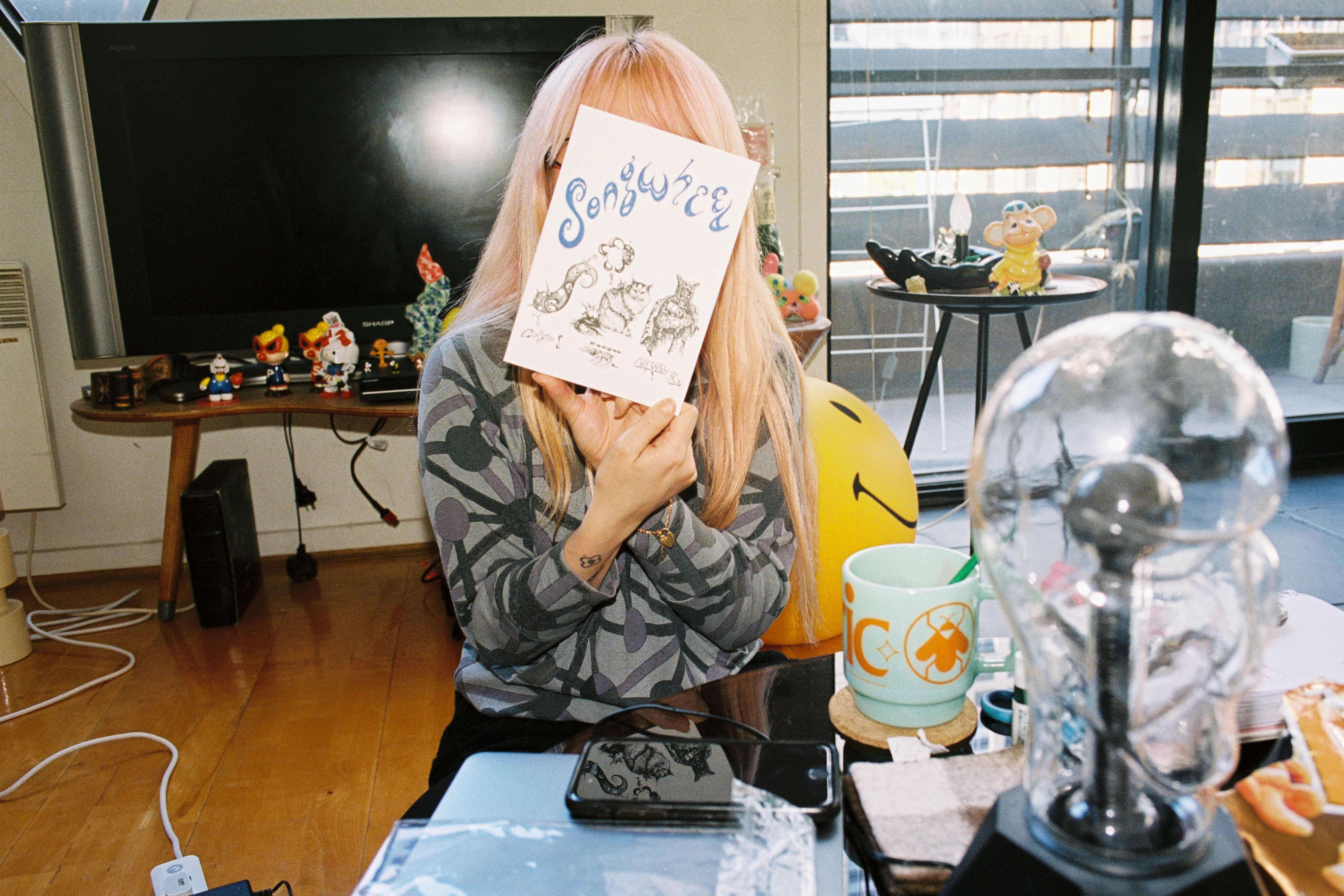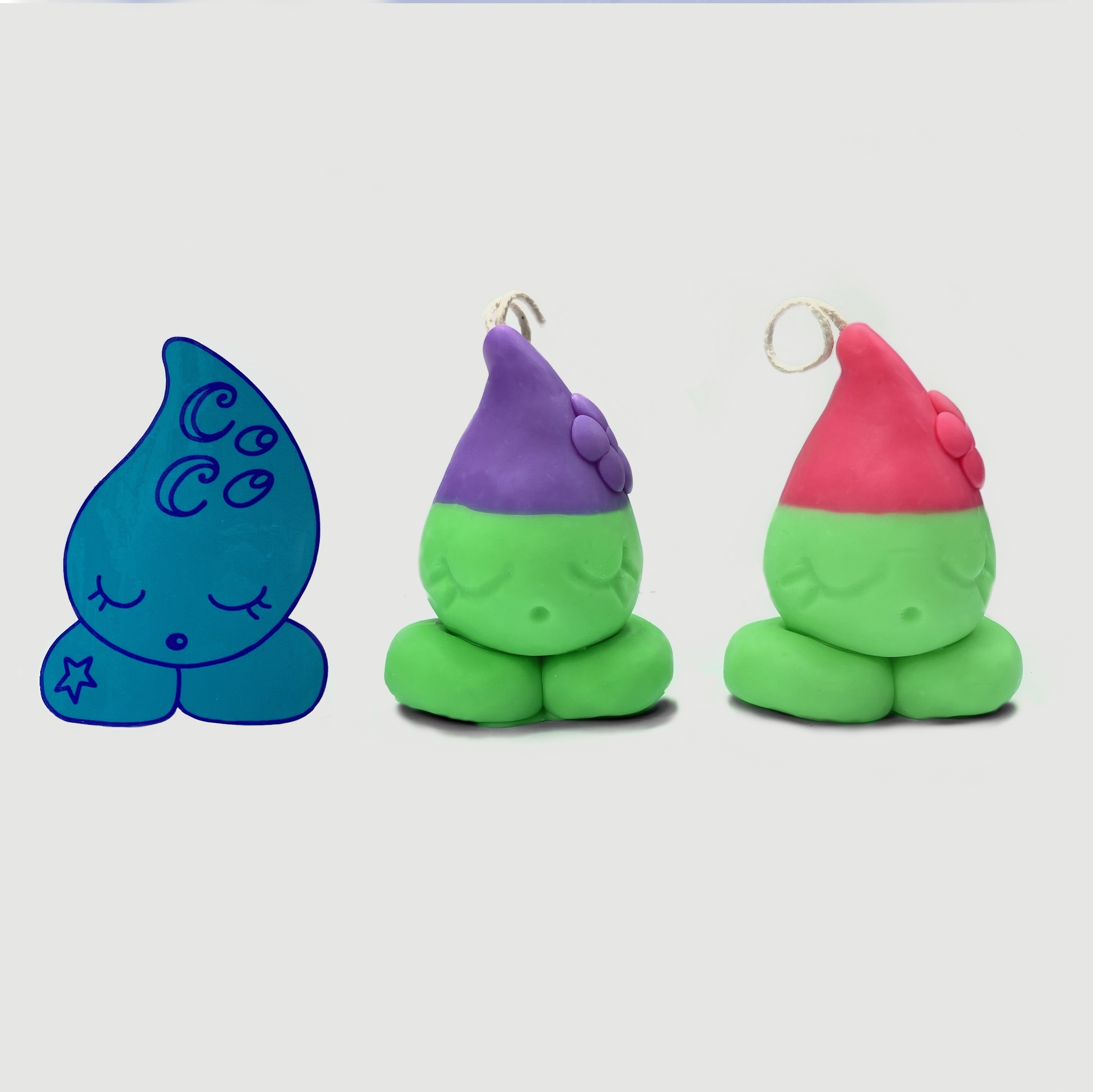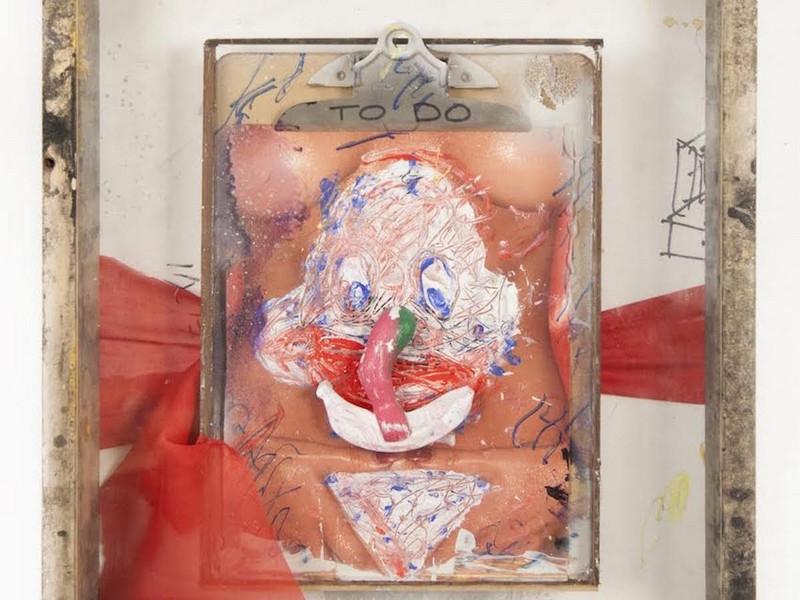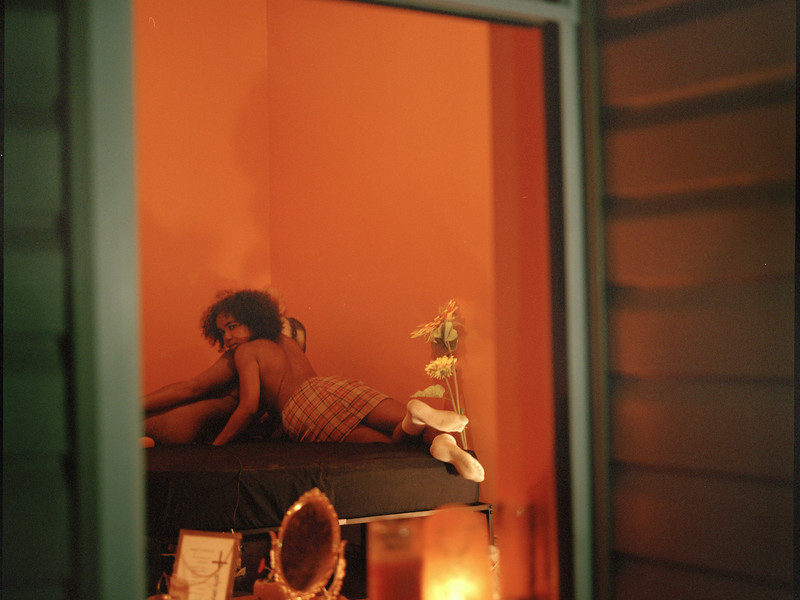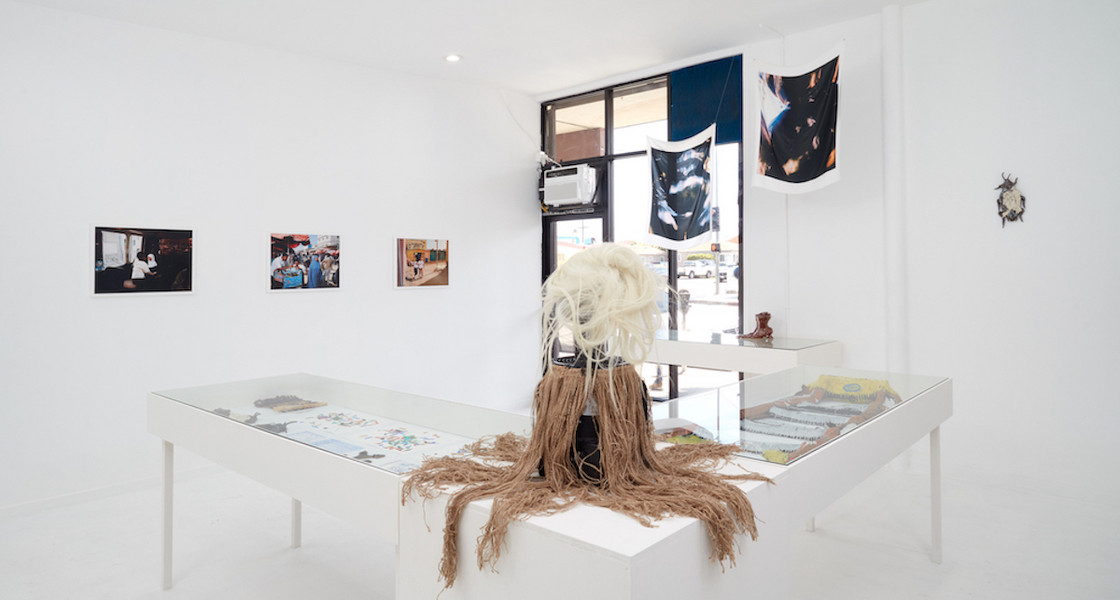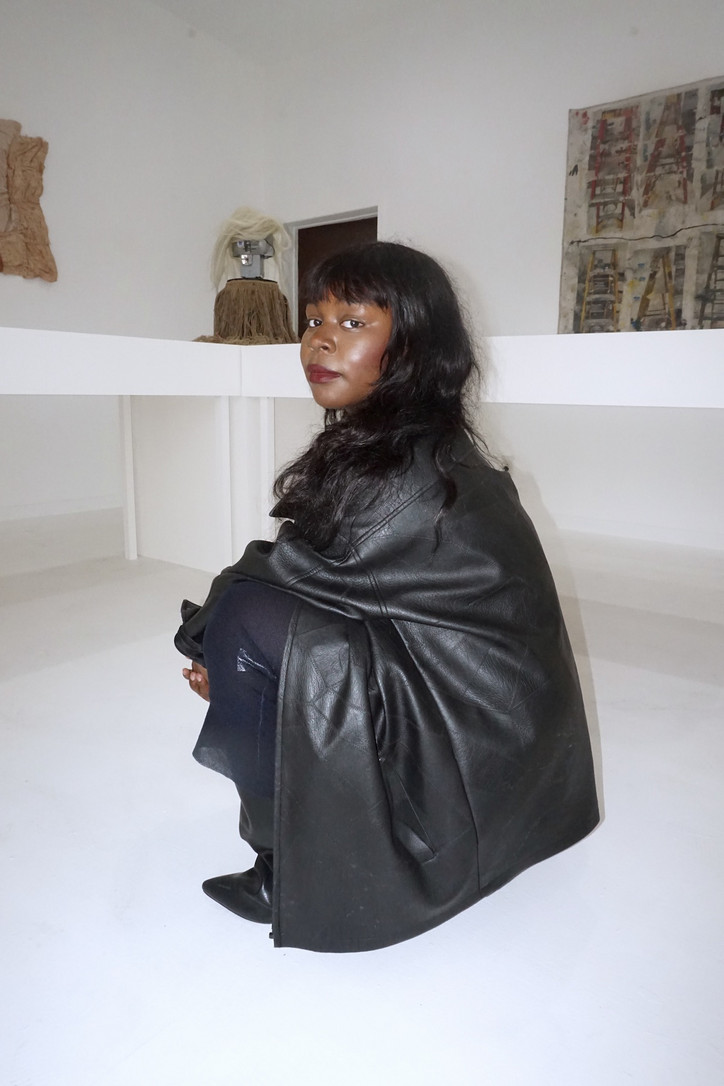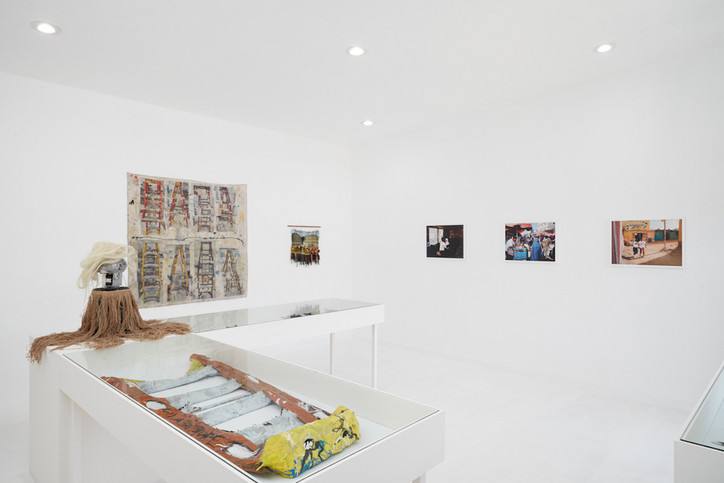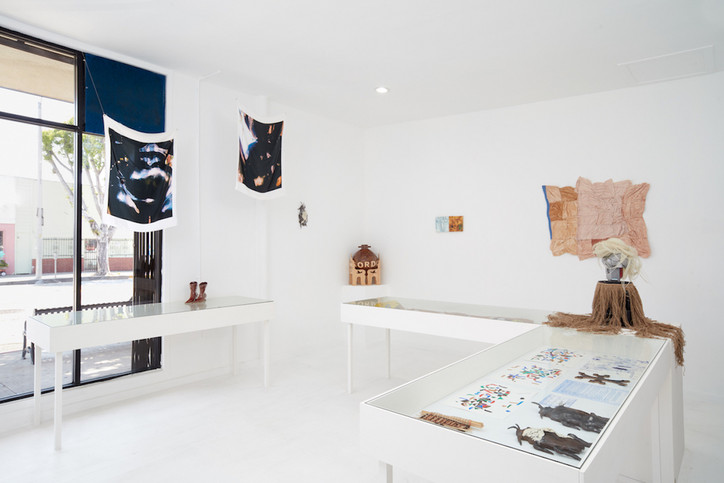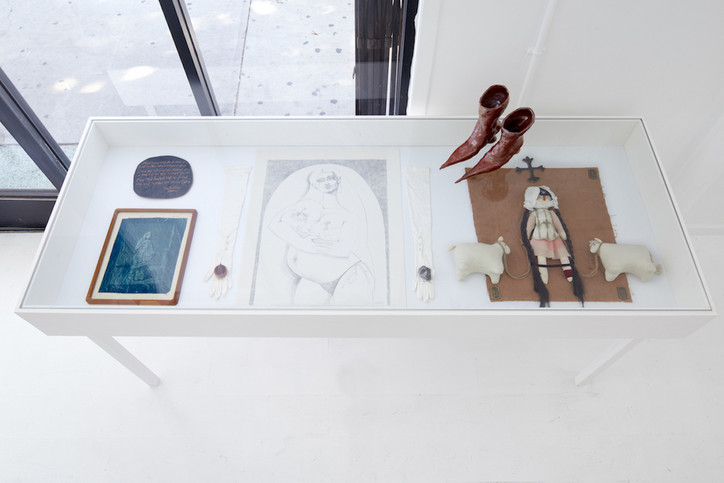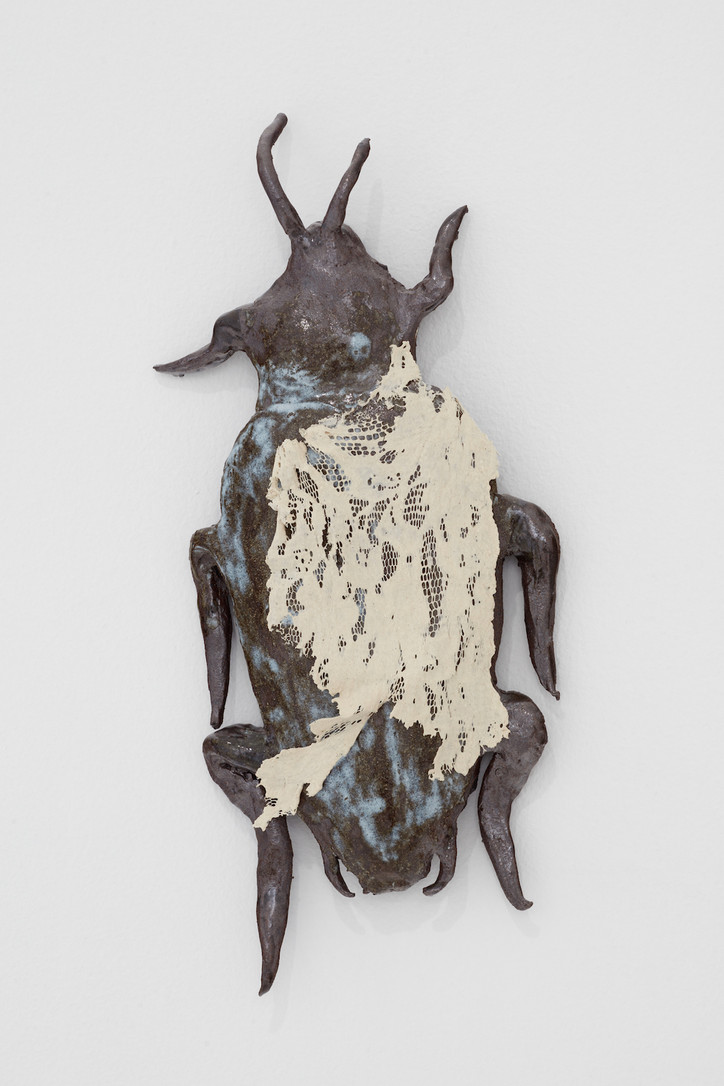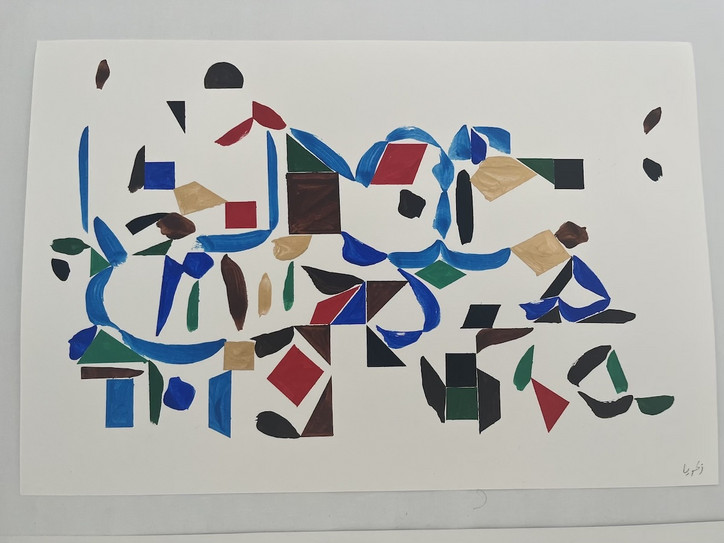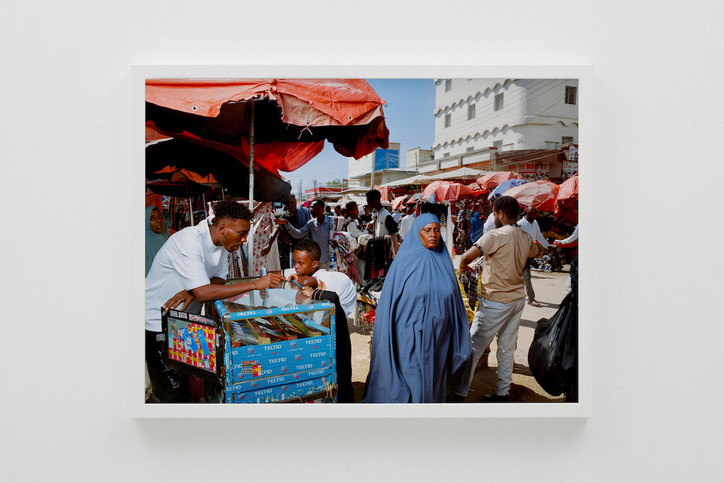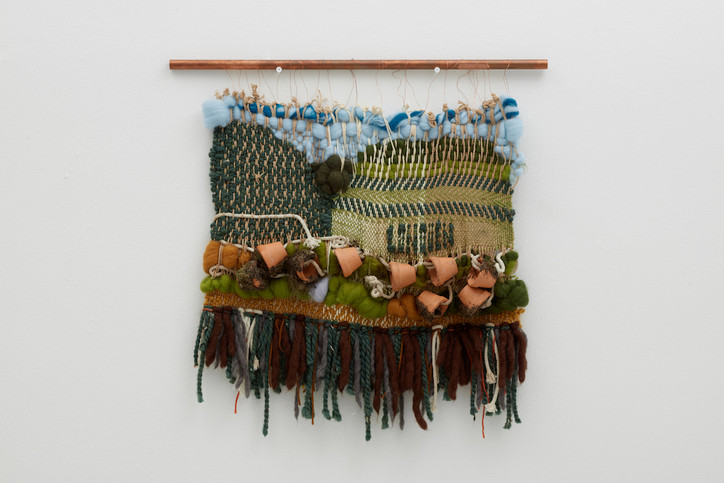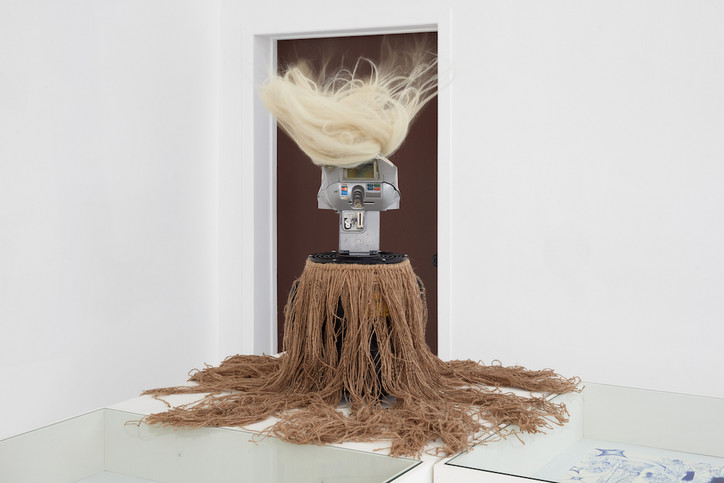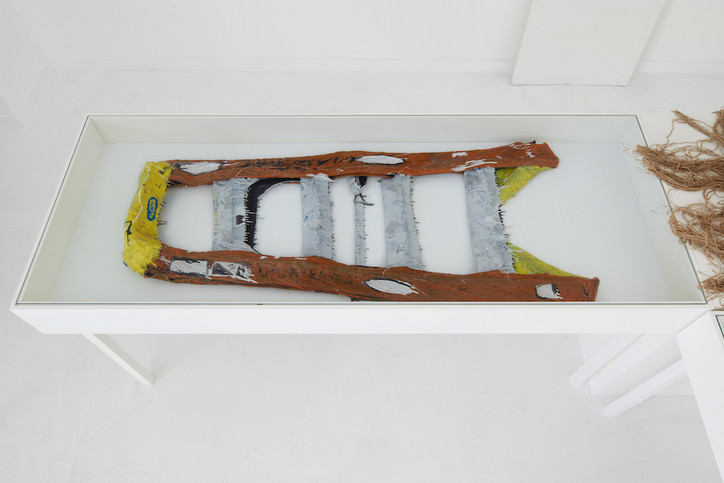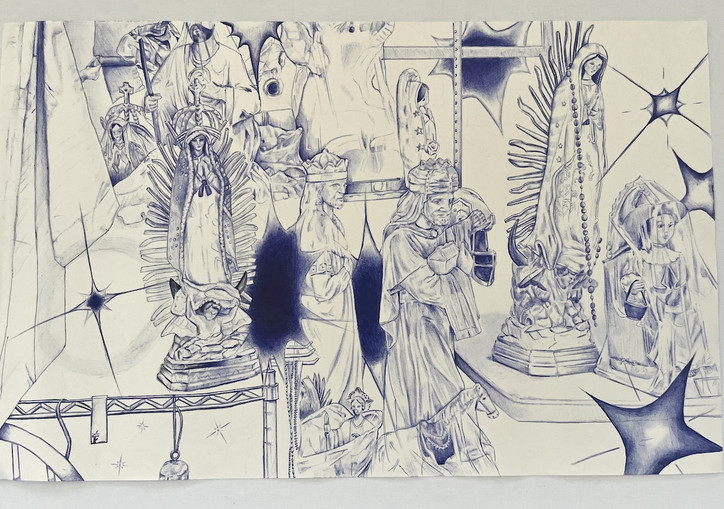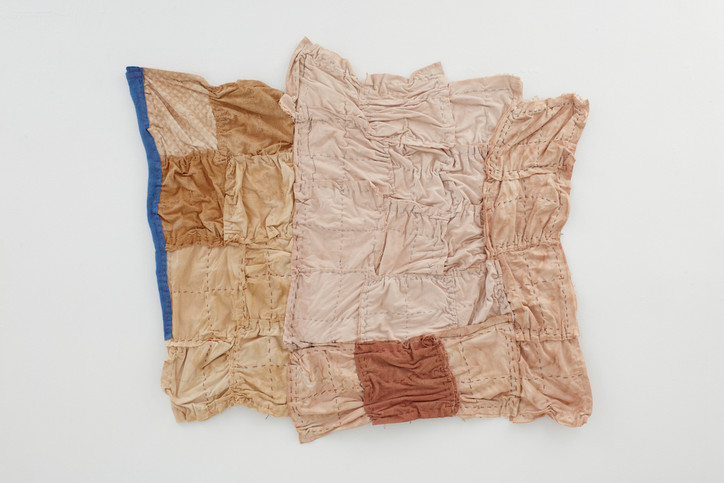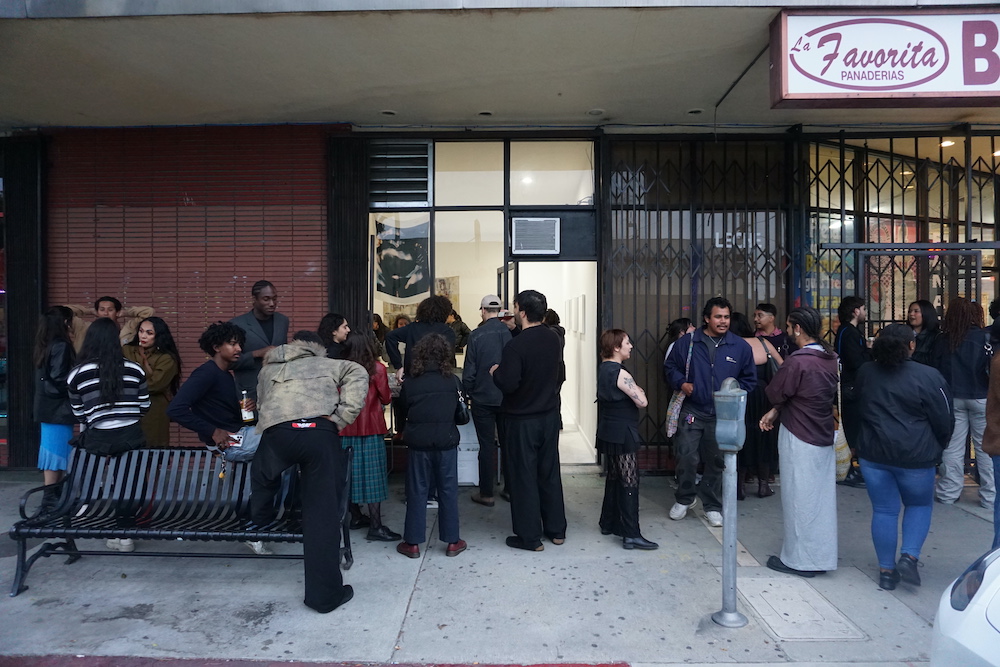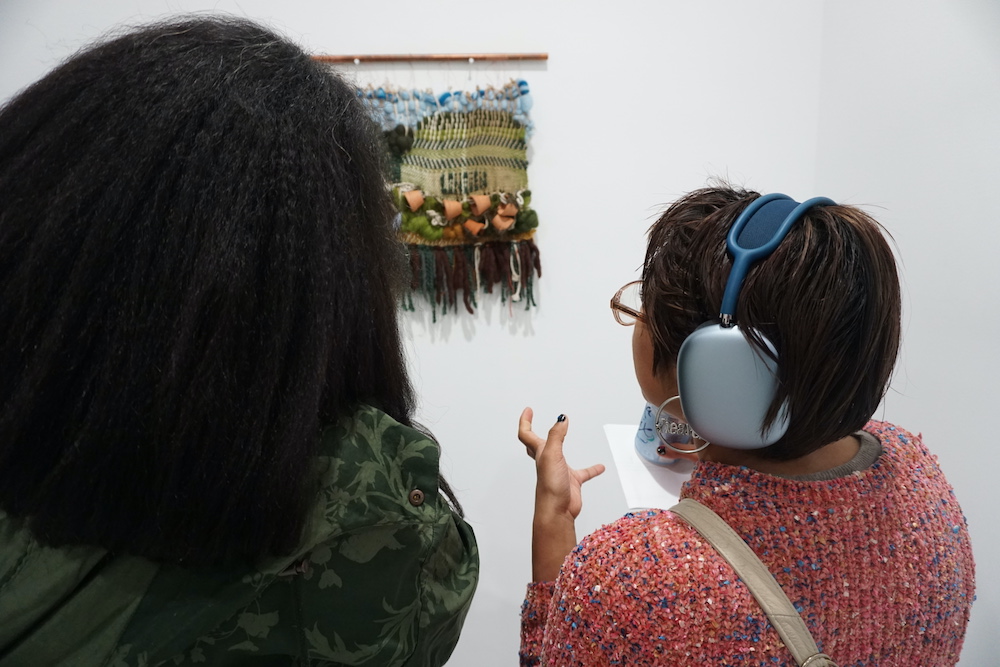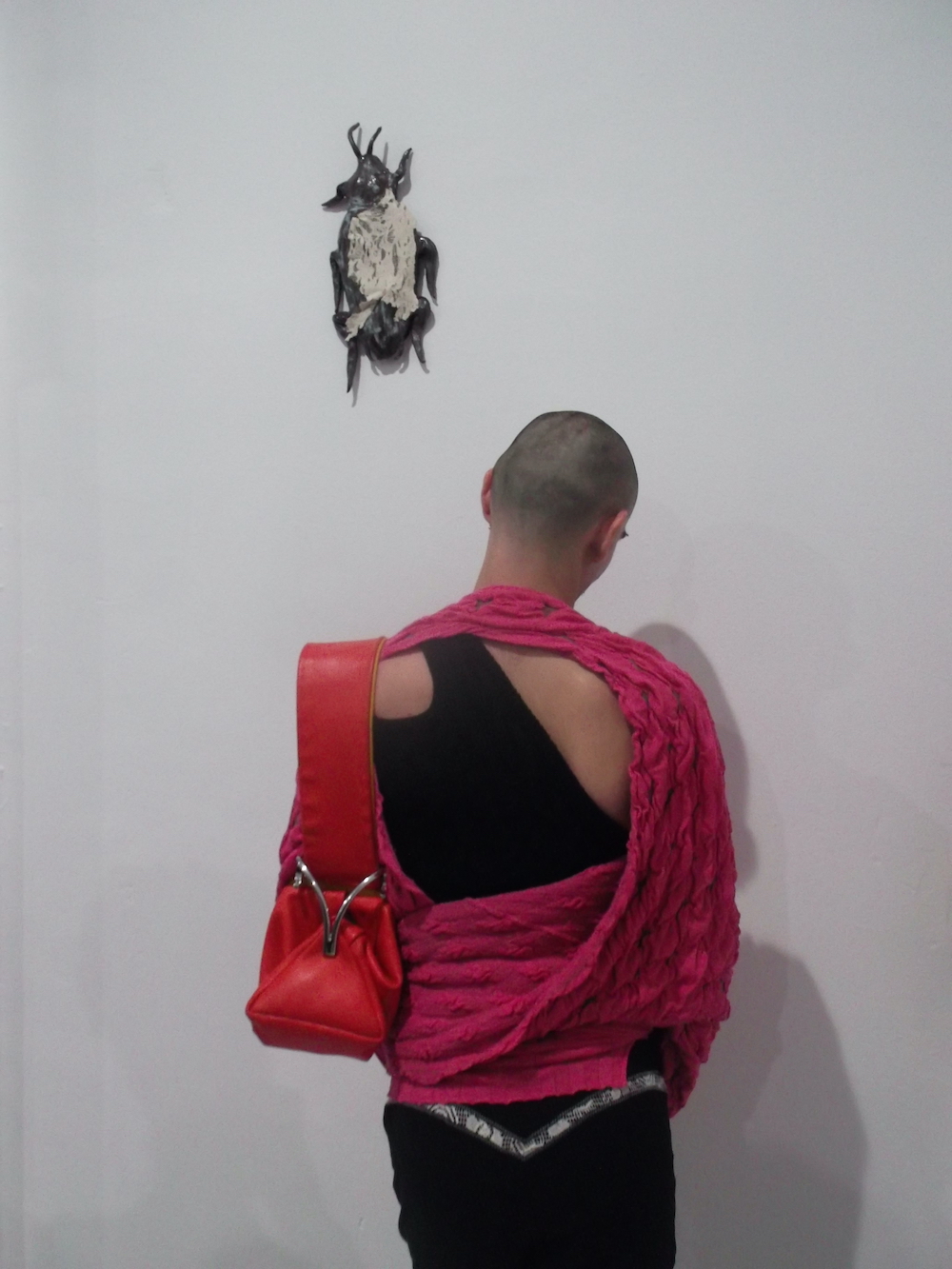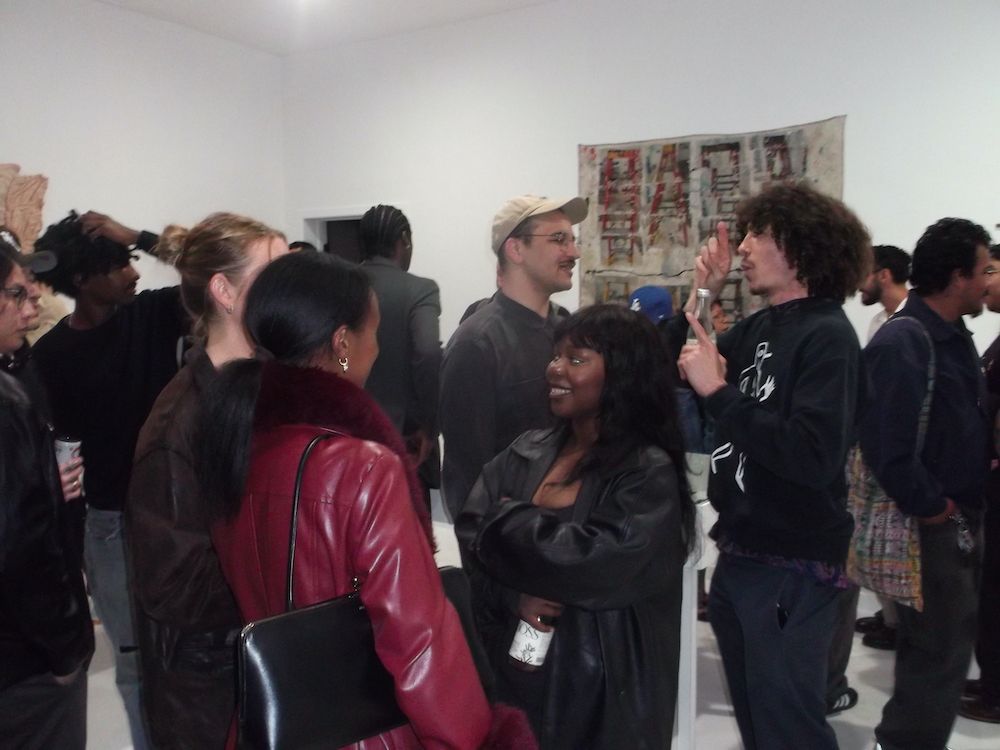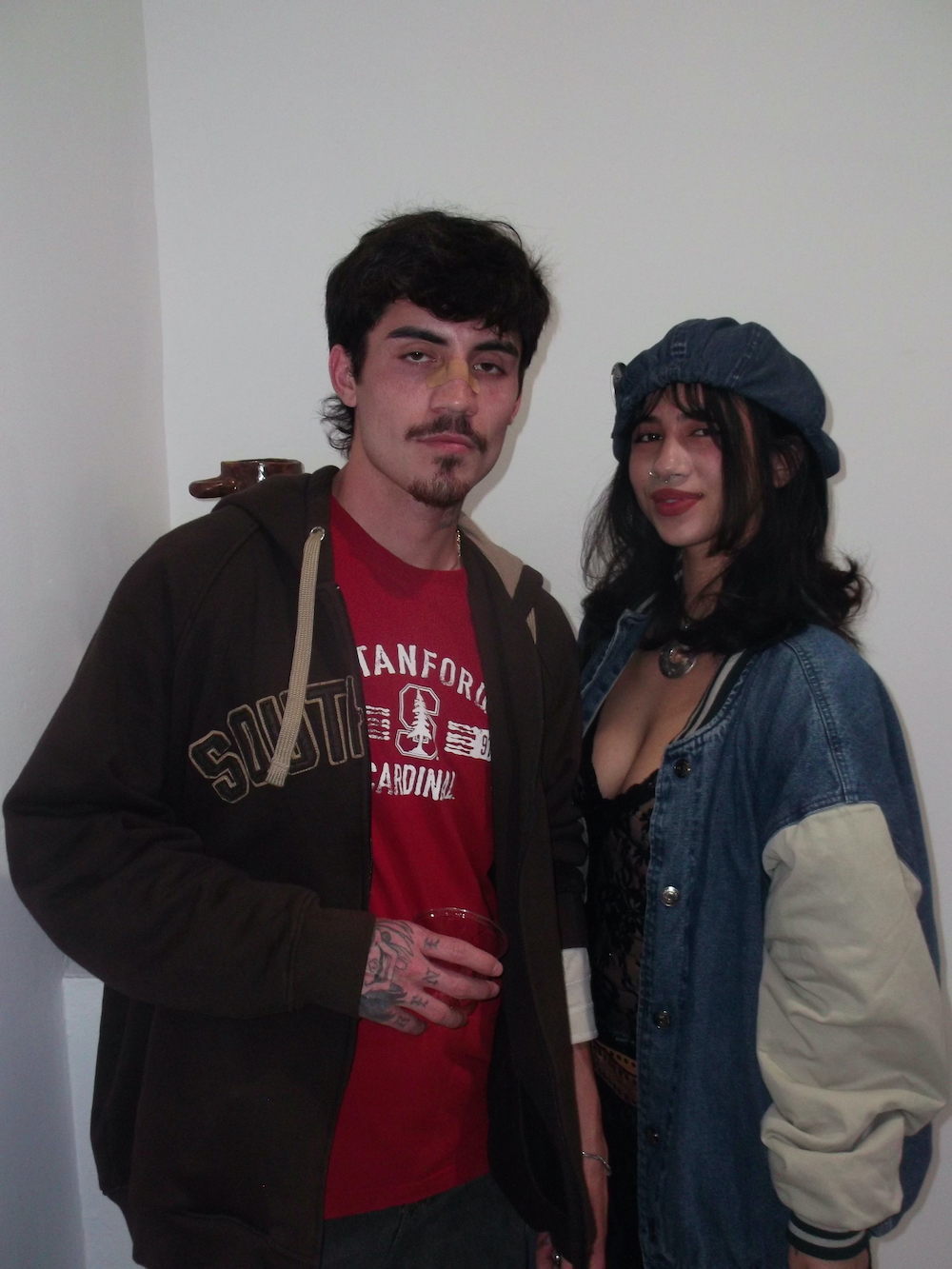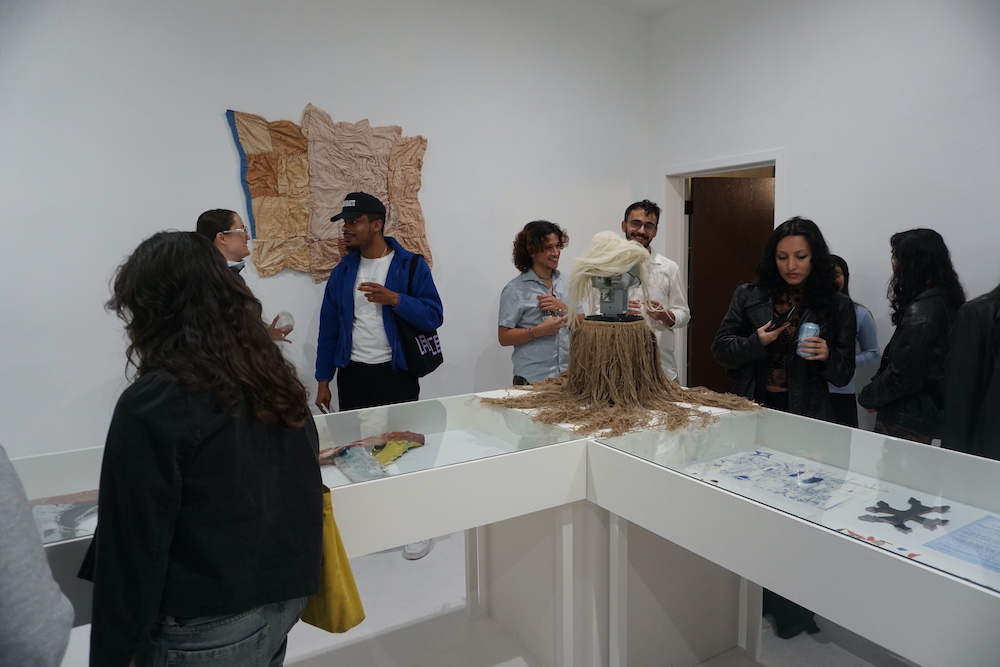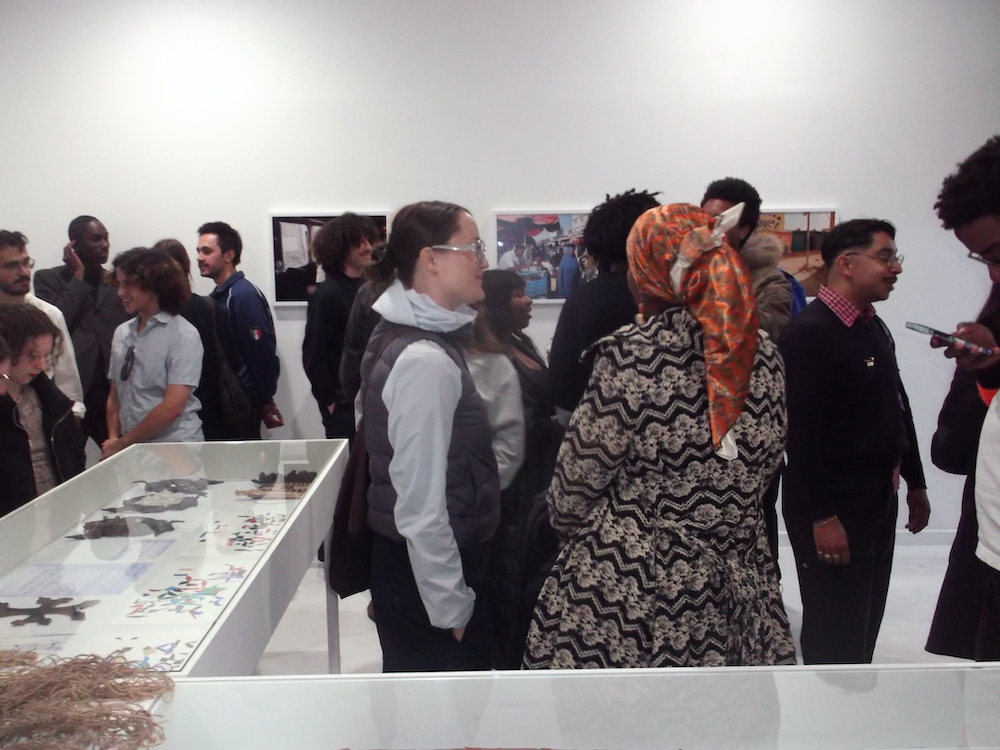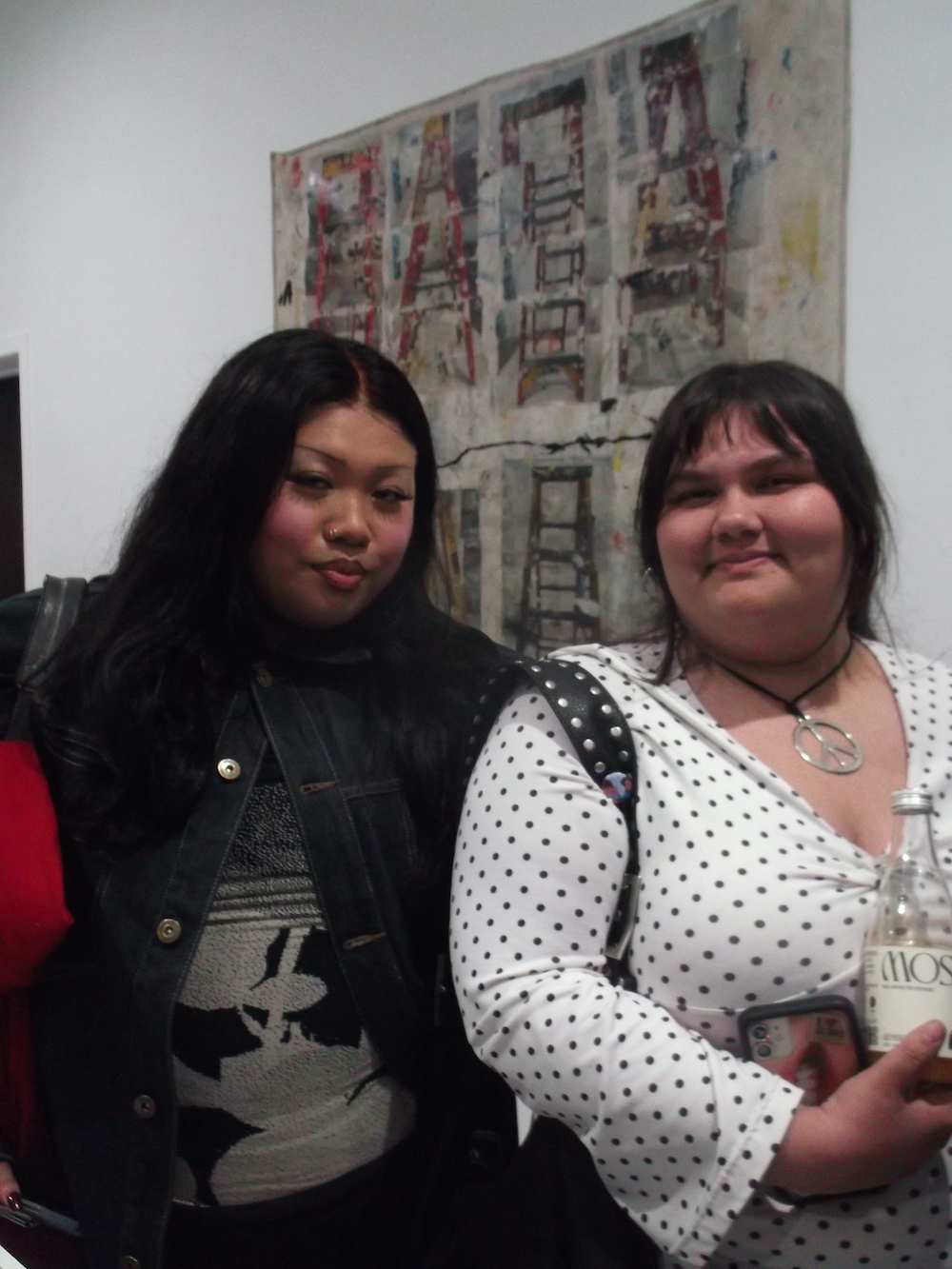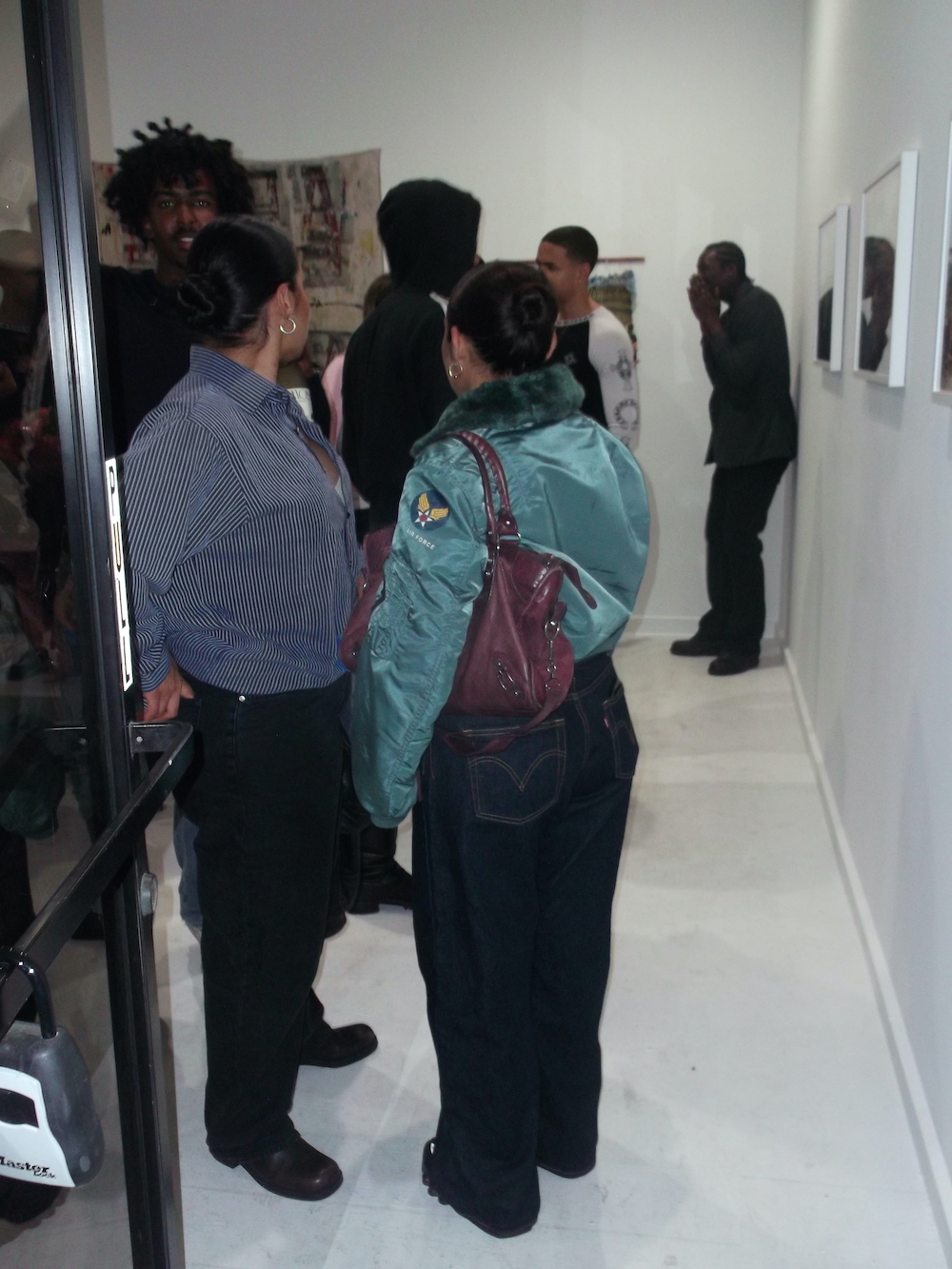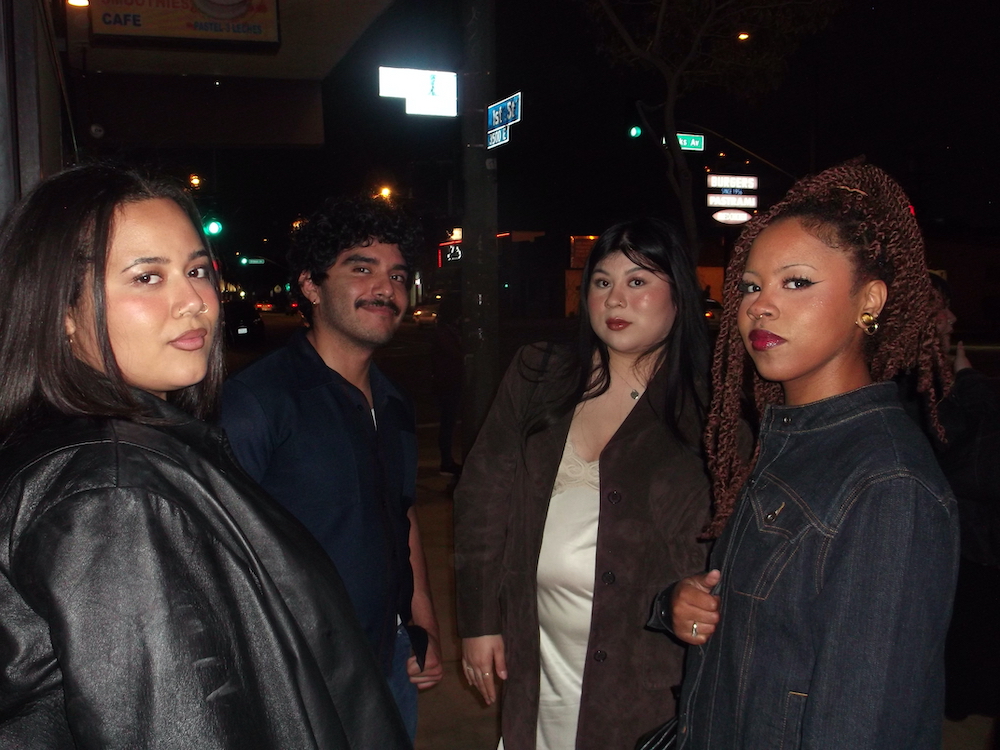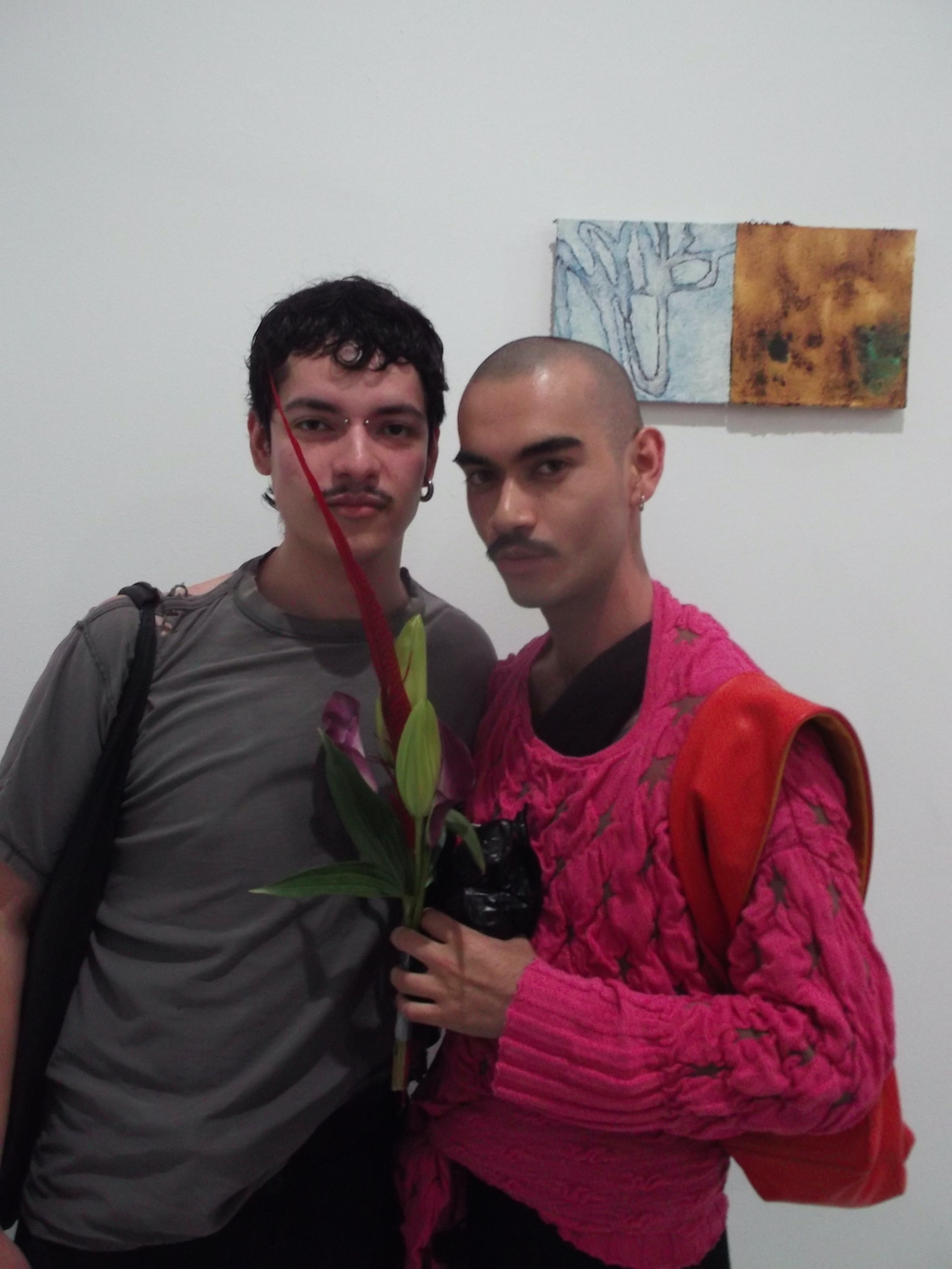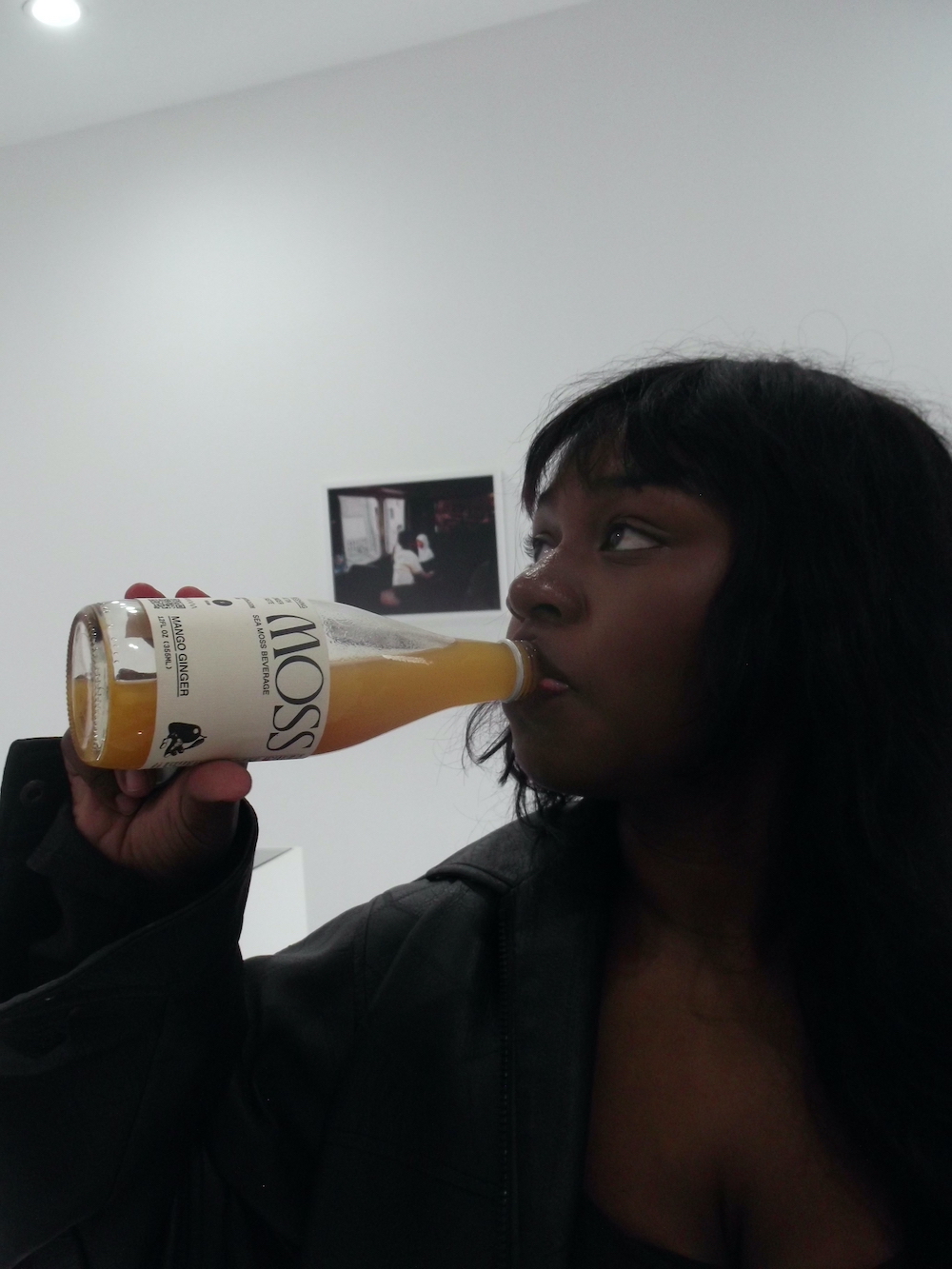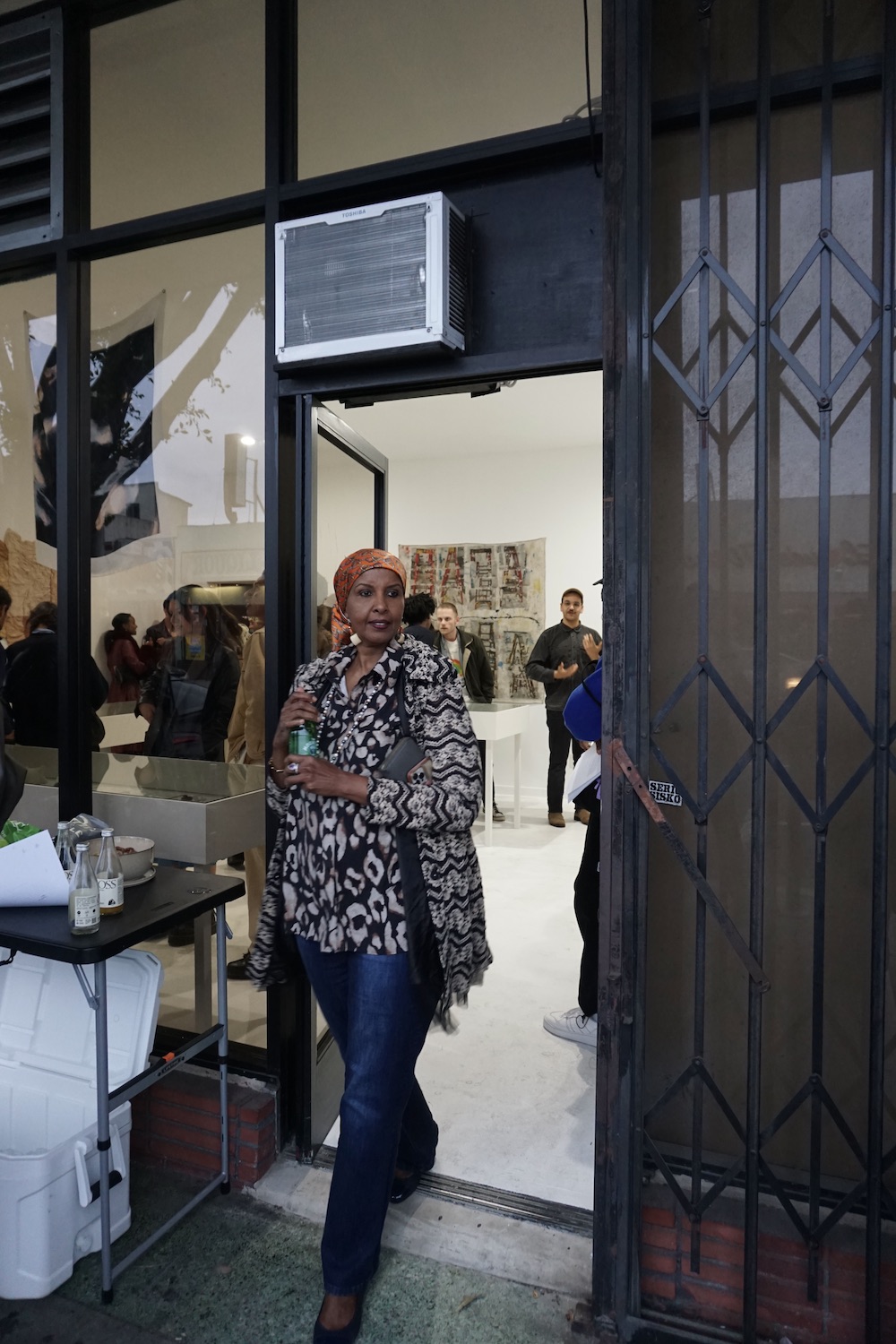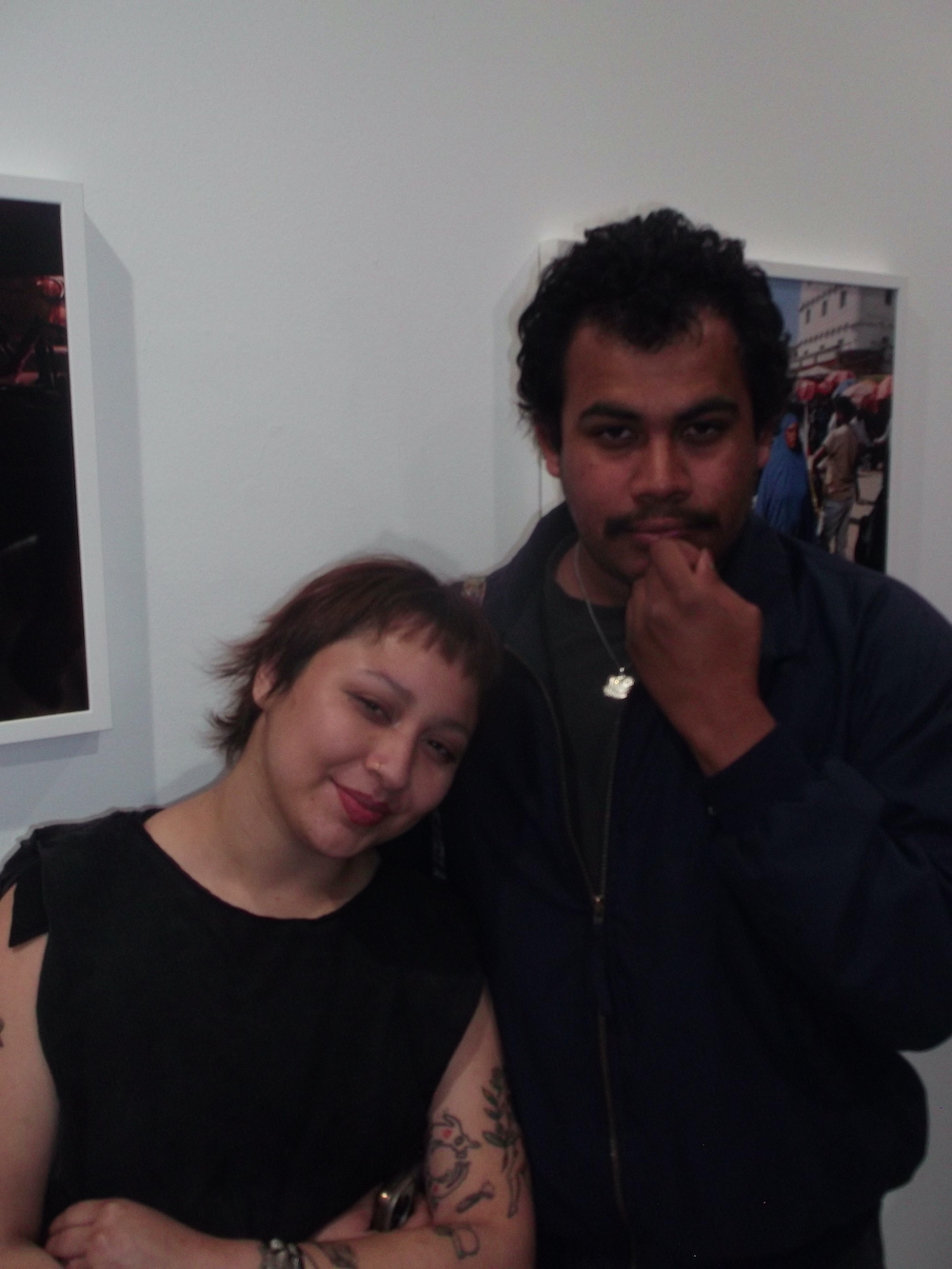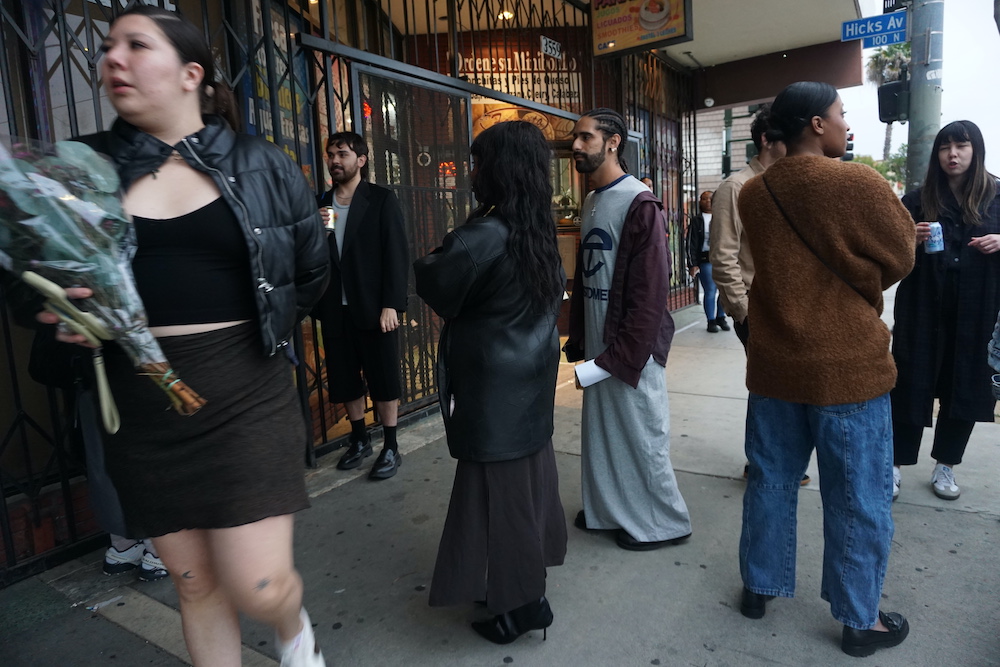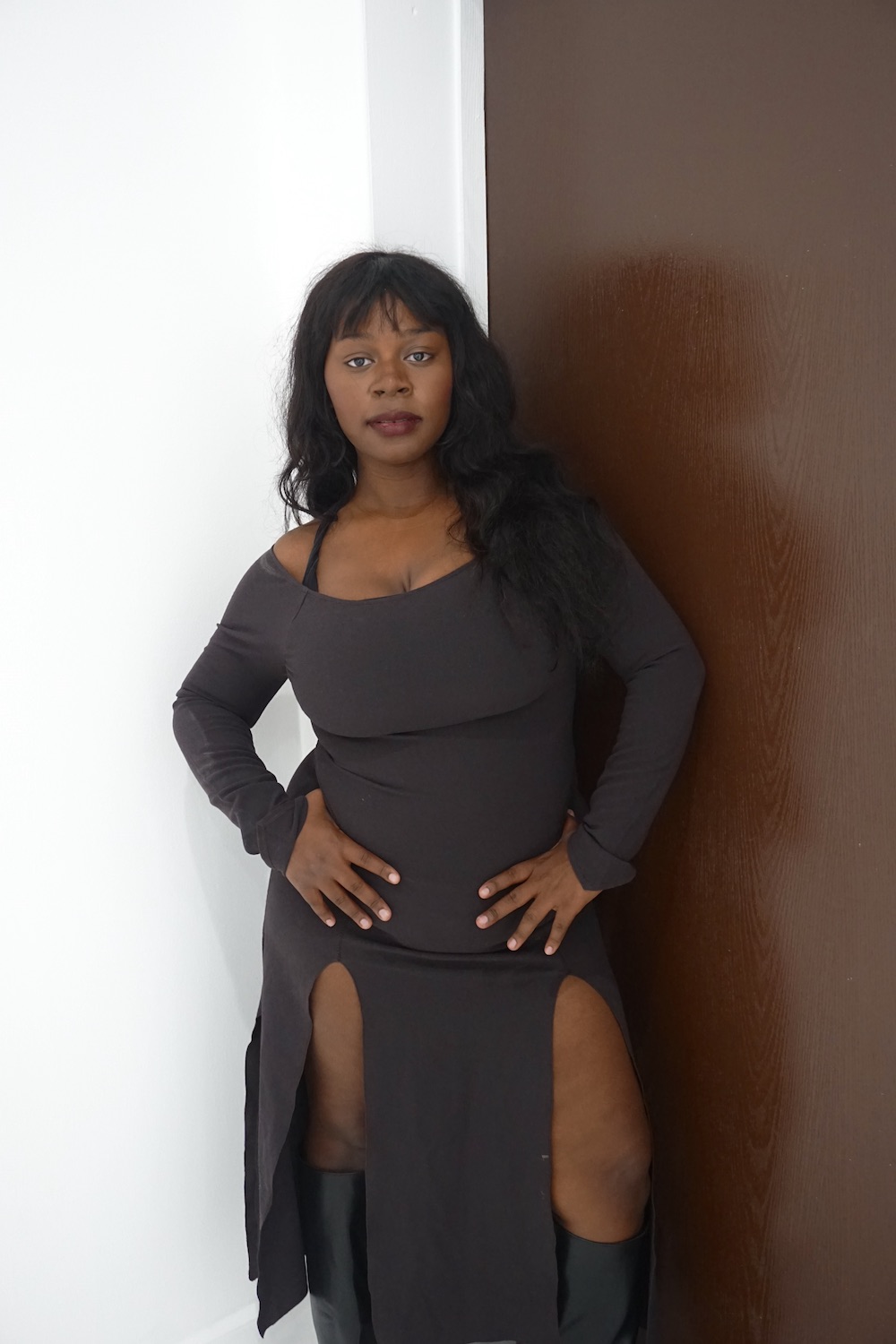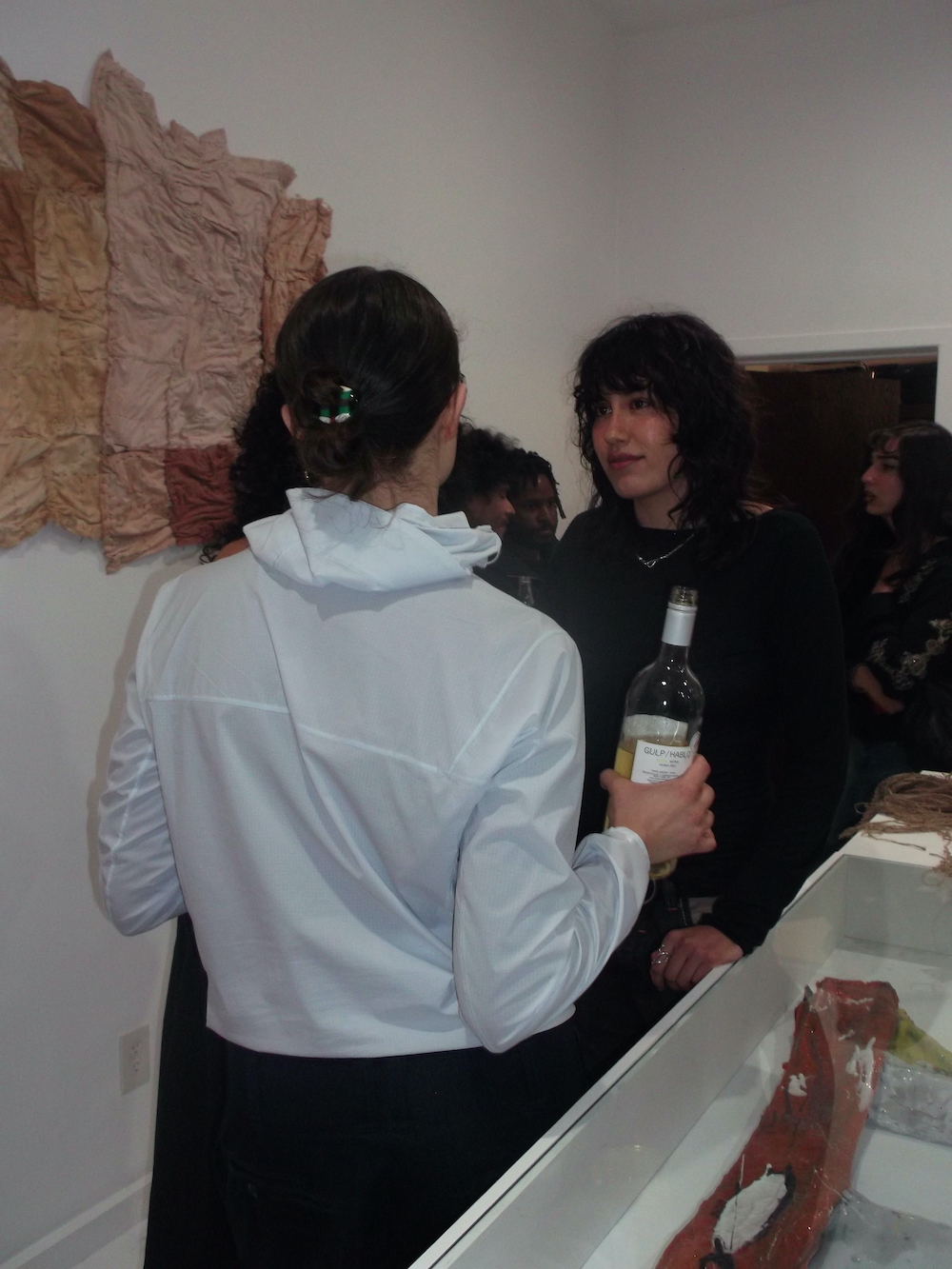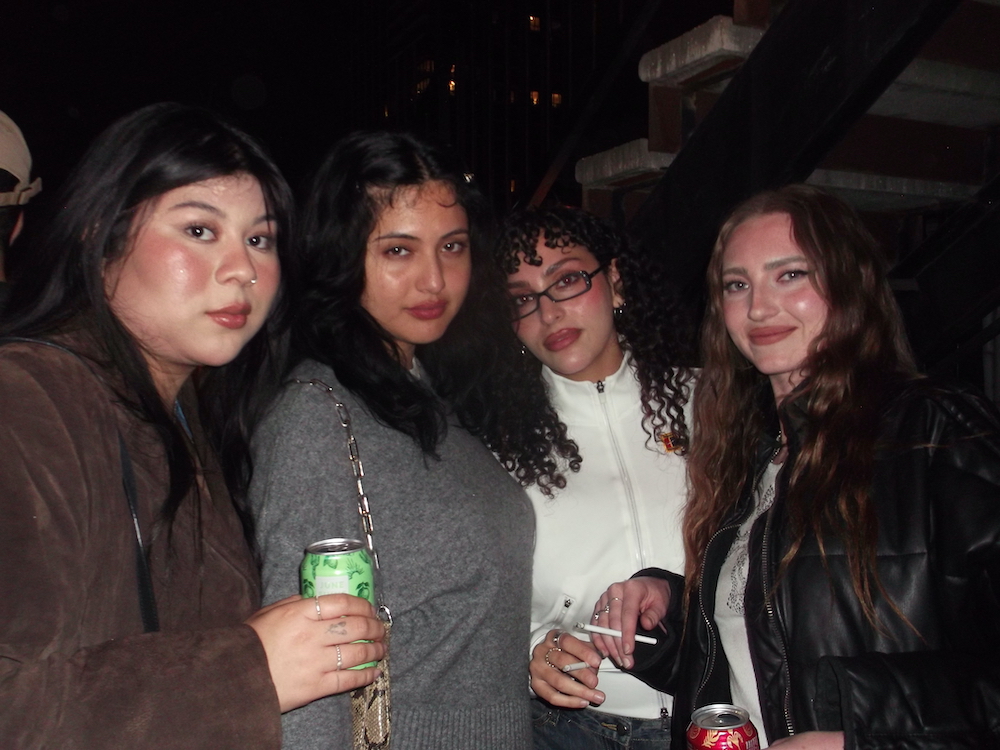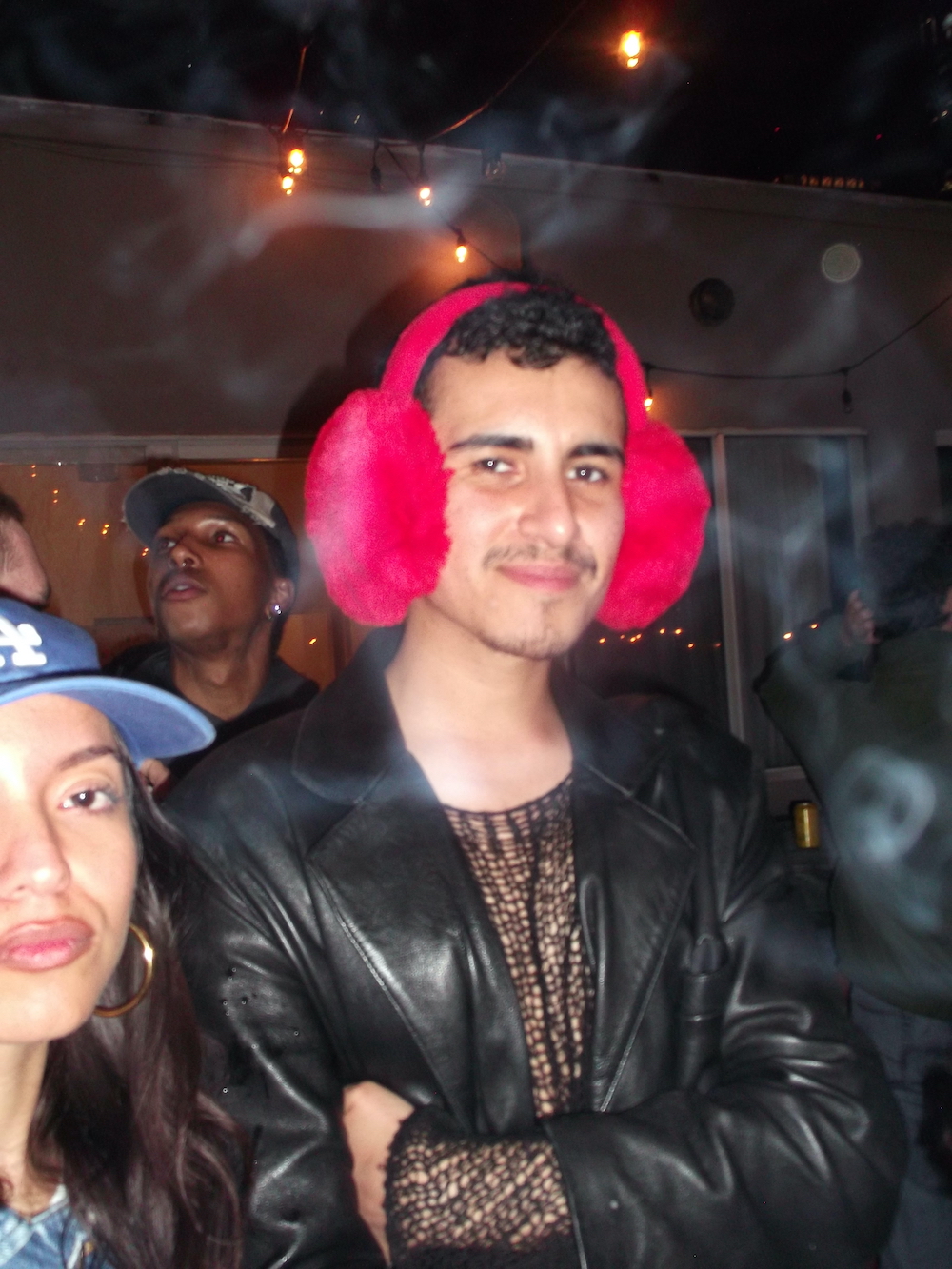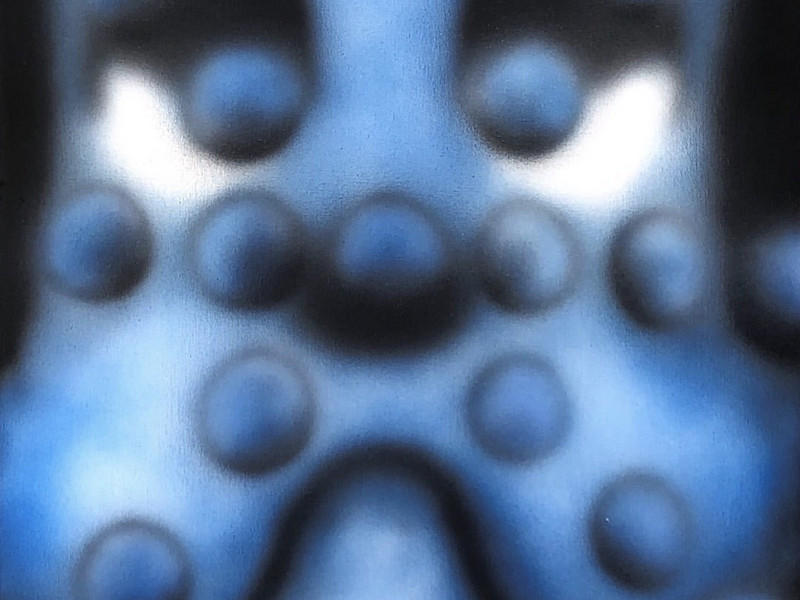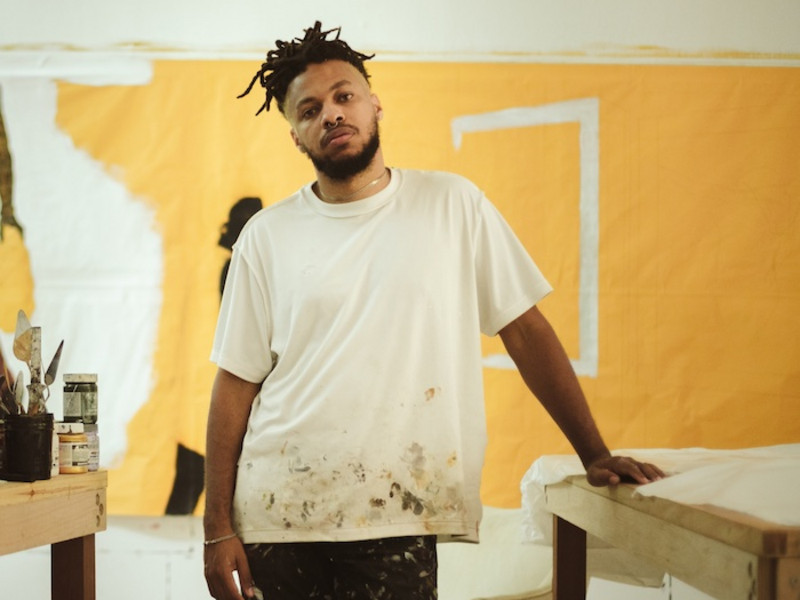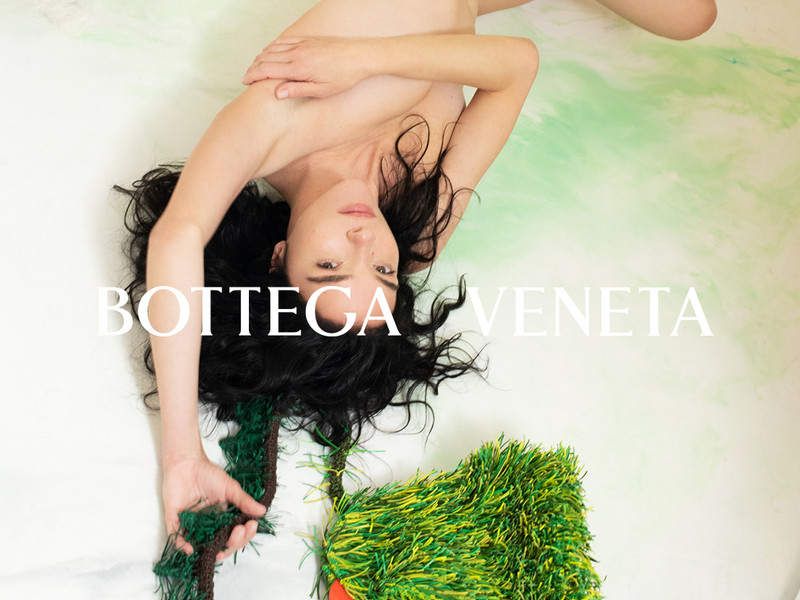Happy Beginning, Middle and Ending
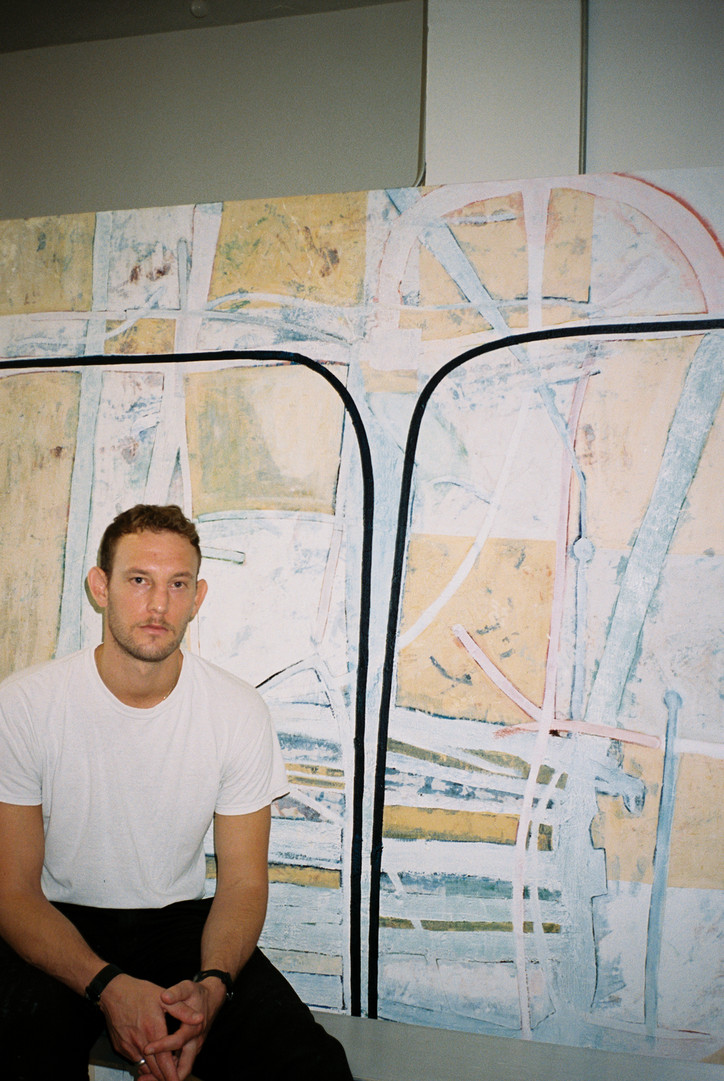
His pieces present an inspired and painful vision board of sorts, featuring pop ephemera mixed with personal nostalgic references— a selfie, the artist’s former rooftop view in Manhattan, Kurt Cobain, Kaia Gerber in Prada… And although all of the imagery can overwhelm, there is a grounding throughline I noticed almost immediately— by way of a pale blue painting leaning in the corner, in the center of which was the Suboxone logo— a piece titled Hester, ‘Trackmarks’. In this, as in his series of recent resin pieces on show at the Lower East Side gallery Trotter and Sholer, Stern’s work is heavily informed by the opioid epidemic across the country.
Here, the artist has achieved what many fall short of when dabbling with a traumatic subject— Stern’s pieces and the manner in which they draw from spirituality, personal narrative, as well as politics profoundly avoid triteness, glamorization, and pointless gore, though never lack in maintaining a sense of humor about it all. In fact, it was his candy-colored piece, painted text proclaiming, “I’m Not Lazy, I’m on Fentanyl!” which first hooked me. So to speak.
From his first solo show at Jessie Andrews’ Tase Gallery in Los Angeles, to his solo show at Trotter and Sholer, Stern’s work— precise yet abstract, vulnerable yet accessible— has shown us an incredible amount of range in a short period of time. I was lucky to get the chance to chat with him again around the opening of his show AWAKE AWAKE ASLEEP, which will be up through April 9th.
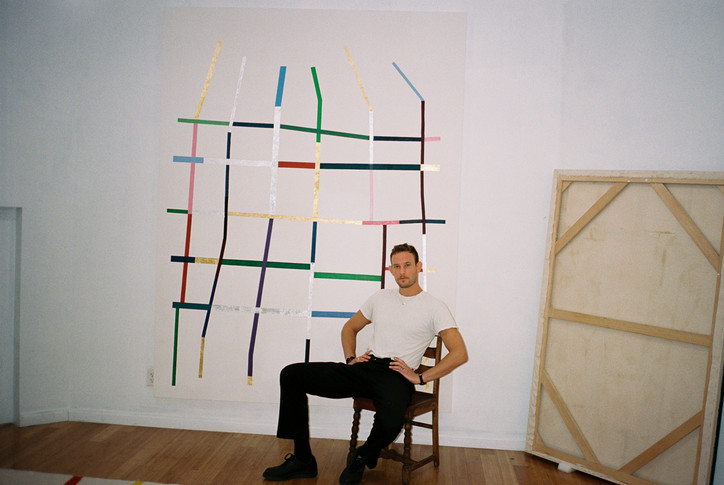
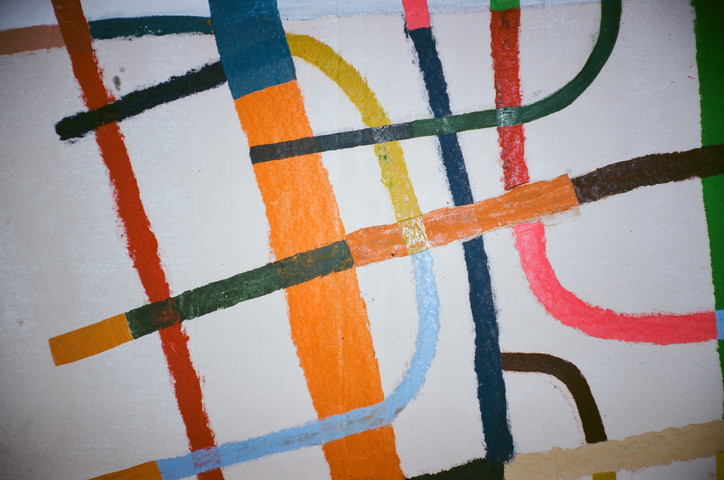
Based on all of the Star of David imagery, it seems like Judaism plays a big role in your work. What is your relationship to religion?
I have a relationship to discipline, routine, focus and simplicity and I have a faith in these things. A faith in consistency to develop a clear channel through which to make art. My work proposes this approach as a sort of religious faith, and often proclaims art to be religion or religion to be art. With the New England Journal of Medicine work, these notions are presented as "scientifically proven" — transitioning the subjective to objective. The Star of David is a way to make a self-portrait and take ownership, in the work, of big symbols and big concepts. It is also just a way to make abstraction using lines in a pre-charged configuration — a way to revere and disassemble an icon. Paintings should undo themselves at the same rate that they are generating meaning. So, the Star of David and Judaism sit at the center of a personal core identity, which is both exalted and questioned.
How does it play into the other themes in your work?
With art and religion, we revere the unknown known or the ineffable. My work relies on a prayer-like practice in the studio often aimed at abstraction, or the invention of symbology. Intellectual and critical rigor have their place - but inside the studio over-thinking can be actively anti-intellectual and close the required openness for magic to unfold. I think of the work as thematically aligned in that it manifests itself because of this ethic of prayer-like repetition on macro and micro levels. A daily practice made possible only through sacrificing so many other parts of life. Some of the work is direct in visually representing schedules on the surface, while other work points at tempo and medicine. Simply put, having a dedicated studio practice is not dissimilar from a dedicated religious practice. There is a long traversing of an inner life that I believe both practices require.
What do you think religion, spirituality, and/or God, and art have in common?
The ineffable, earnestness, morality, and thinking about life from the vantage point of death. I don't think there's ever been a time, for right or wrong, where I've approached artmaking as a non-existential exercise. It becomes a formal exercise quickly after the approach, but the original engine involves a sense of existence or eternity. I had a thought recently that as the years of painting stack up, I become less aware of what a painting - the object itself - is, and what the concept of painting is. The motions of an artist in and around the studio become its own kind of abstraction. Religion and art are also opposites. Religion has to do with suppression and recruitment and art does not. But this contradiction can still be generative. The idea of certainty or knowing is what I'm looking to undo or wedge apart with my work. Especially with my own opinions. I like the clip of Kanye in an interview saying: "I just told you who I thought I was, a God!" That's an art moment. It's very funny, direct, and beautiful. I think the artist needs to play God a bit - a touch of loose grandiosity - even if it means getting lost sometimes.
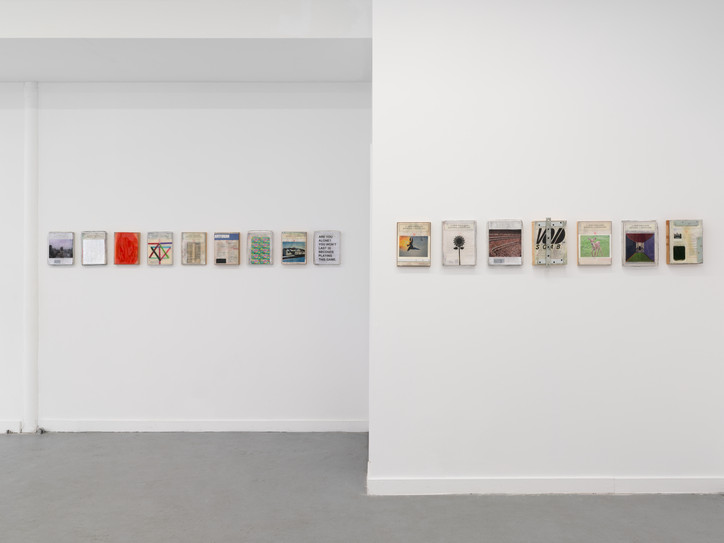
Your works in the current show speak to the opiate epidemic and addiction, what’s your relationship to that?
There’s what feels like a very American behavior related to ambition, that results in a need to escape. Even if it’s just a vacation. This country and the world are set up in a way where participation is required but we don't always want to participate inside any of the existing structures. It can feel claustrophobic and ridiculous. Despite the hell of addiction, being a junkie can be a way of opting out, in a very complete way. There’s something about this departure that sticks with me. Making art deals with similar internal and external processes, without the torture part. I’m dealing with this personal history in the work, but I’m also thinking about the ritual of a studio practice, the bliss attached to isolation and real connection, and developing strategies for fulfillment. Do you think you use those themes in your work because it’s cathartic to you personally, or because you want to make a statement on the larger issue? Both. And then I want to question the larger statement.
How much of your work is about personal experience?
If I knew how to avoid personal experience, I’d like to try it, at least once.
Has it always been that way?
Yes. Experience and perception are what we’ve got. I like to present mine, from different angles – Ideally when it somehow feels simultaneously inadequate, shameful, earnest, and hopeful.
How do you feel about the idea that all art comes from pain?
I think as an idea it's a simple error. All art doesn't come from pain - some does. Pain can be exquisitely beautiful, but pain is not more interesting than happiness or pleasure. It may actually be less interesting and immeasurably less sustainable. Also, working from inside serious active pain is not even possible. It can only be mined later. I think it's best to work from a rested, available, grateful, driven place, to access the broadest deepest range of precise emotion. Having said that, it's hard for me to imagine what making art would mean without some periods of profound pain.
What was the first medium you fell in love with?
I really fell in love first with ideas about what a painting could be, more than any medium. And it's stayed that way. Varying media are just tools to realize ideas in my practice. I love the idea not the tool. However, in recent years I've painted mainly with oil paint. Apart from it being so rich and beautiful it seems there's a contemporary notion that oil paint is pretentious or evil in all its superiority - This is appealing to me (to use oil paint despite this) so I'm sort of in love with this bonus. When I first started to paint, I was in love with the idea that a painting could operate between being a picture, and a sign, and a sculpture.
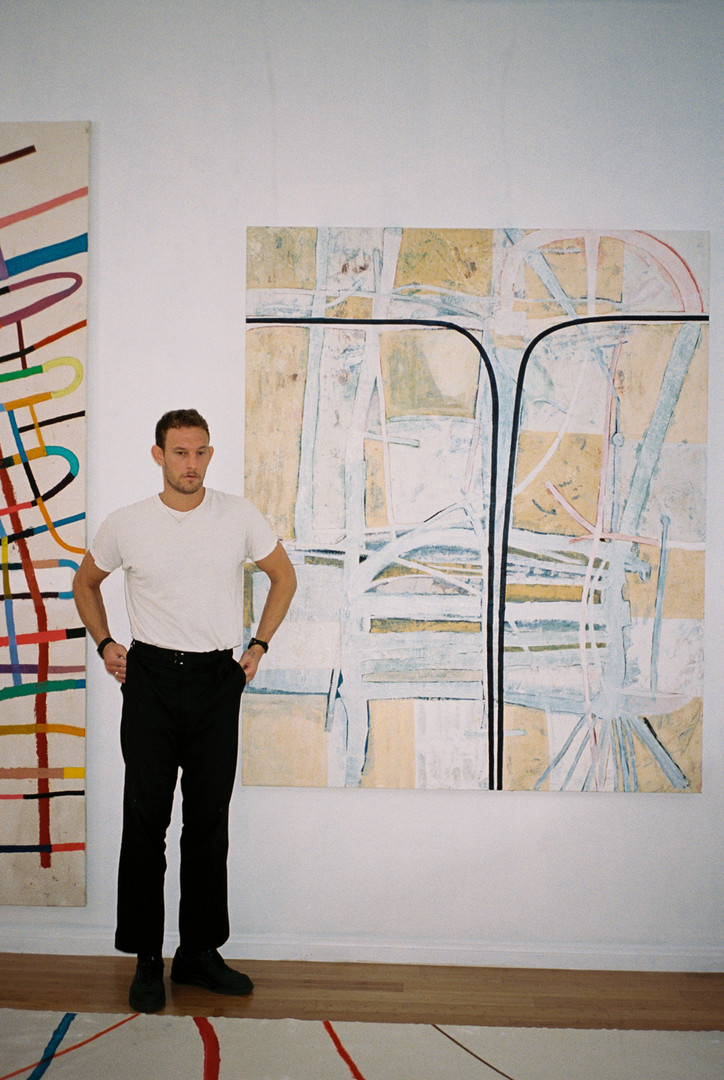
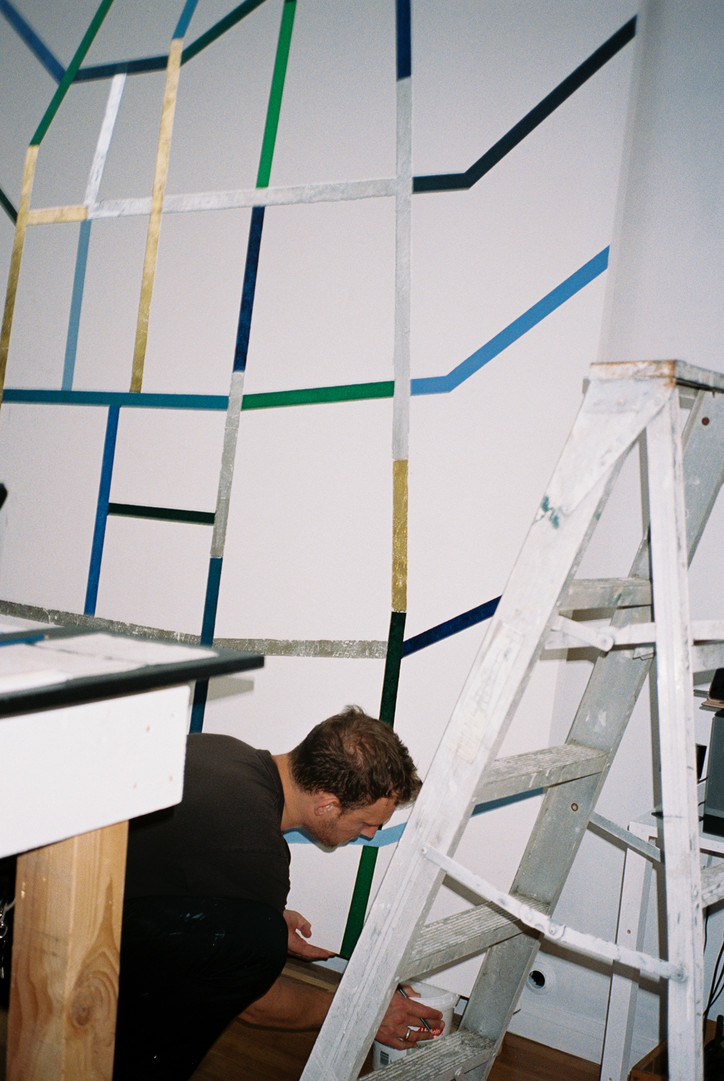
Which artists do you relate to the most, work wise and also, possibly separately, in regards to their story or personal narrative?
The artists I relate to most have been primarily painters who I think approached painting as a unique opportunity for object-hood, ready-made, and a sort of raw materiality. In no specific order: Kounellis, Hesse, Duchamp, Stella, Andre, Bickerton, Johns, Warhol, Ruscha, Sillman, Martin, Mehretu, Ray, Marden. I also relate to designers like McQueen and photographers like Mann and Lorca-Dicorcia. Personal narrative is harder to really know, but my hunch is a lot of time was spent thinking and dreaming about what, fundamentally, a painting, a sculpture, an image is and could be, is shared by all of these artists – something I relate to.
You haven’t always worked in this practice, what were you doing initially, and what changed that made you want to do this?
My practice of making these New England Journal of Medicine works happens alongside my larger scale painting practice in the studio. They have been a way for me to conduct a more urgent feedback loop with the work. Partly because of less labor required to finish them and partly because of the immediacy of concept generation when mixed media is being collaged onto such a pre-activated surface, like that of the Journal. This collision of imagery is exciting and effective, and simply felt like my direct gesture and sensibility. The authority of the NEJM is a compelling container to deal with a wide array of contradiction and exaltation.
How does it feel to put a show up for the public that holds so much of your own story in it?
It feels very good. When a painting is finished, and hanging in a new space, it becomes its own new thing. I relate to it in a more distant way. I walked around this recent show and felt like a viewer discovering something. It's not so sentimental. I like my work to feel like a found object or a ready-made during its creation and at its completion, so by the time the show is up its living a different life. I’m sure I would notice if something was off.
What gives you hope?
Anything, everything. For me, being an artist is the most optimistic and hopeful privilege. Cynicism has always struck me as completely uninteresting and naive. For me, even profoundly hopeless times near death, have resulted in hope. I'm inspired (made hopeful) by so much of life - sadness, a glass of water, humiliation, a song or film, a sandwich or cup of coffee. Mostly small things, but also meeting someone who is smart and warm.
What’s your ritual when you’re in the studio, if you have one?
A few important ones: Obsessive pre-work cleaning, music or podcast on too loud, and a large water or tea close by.
